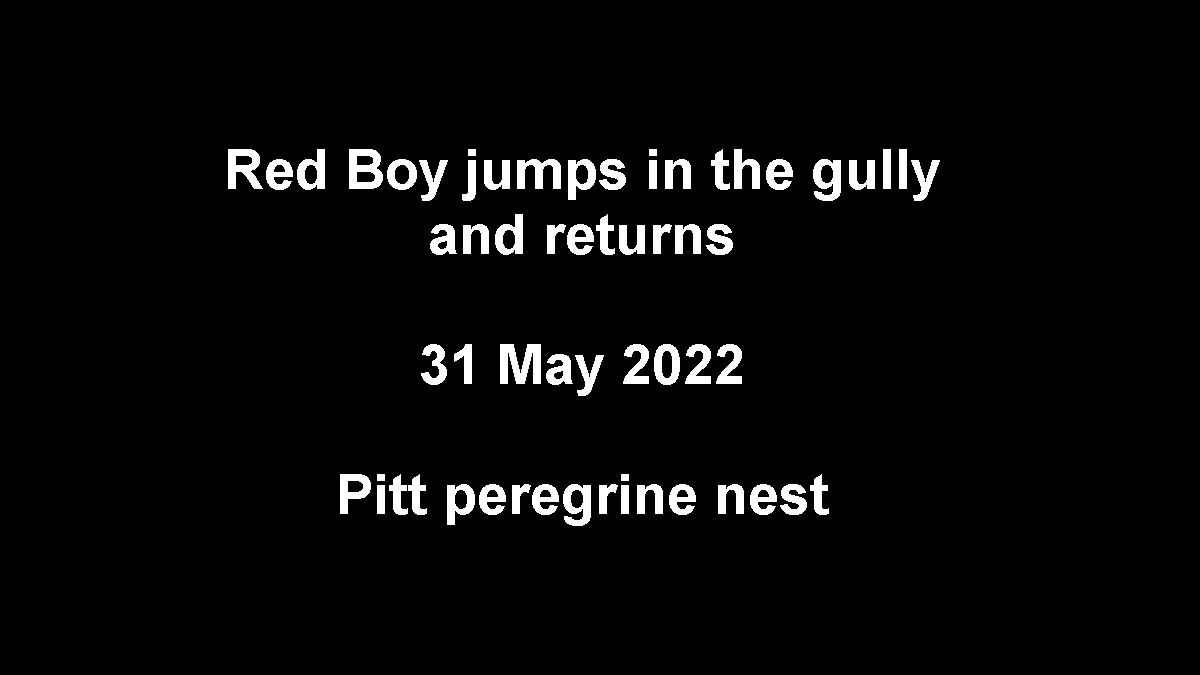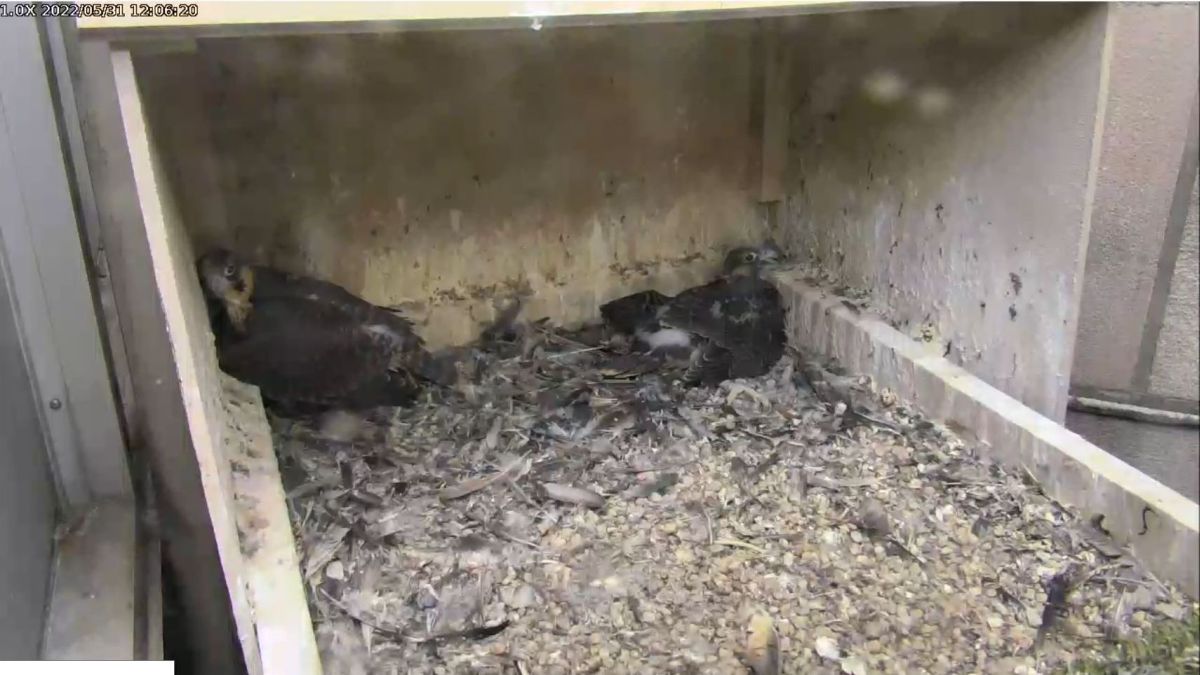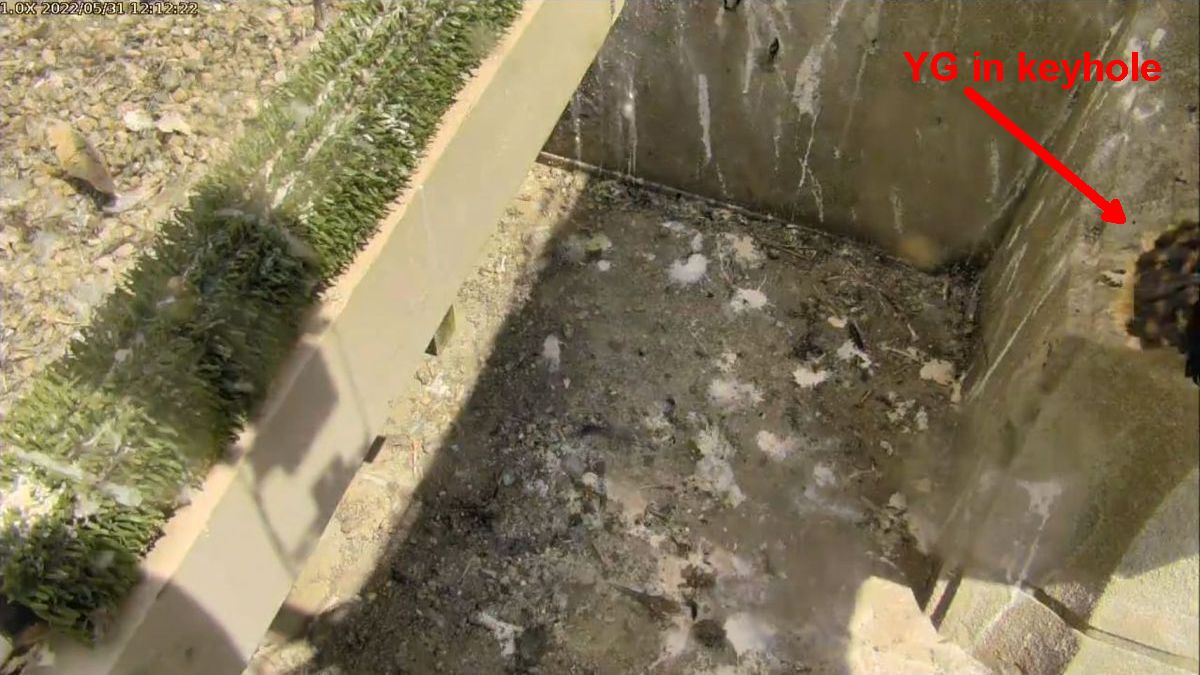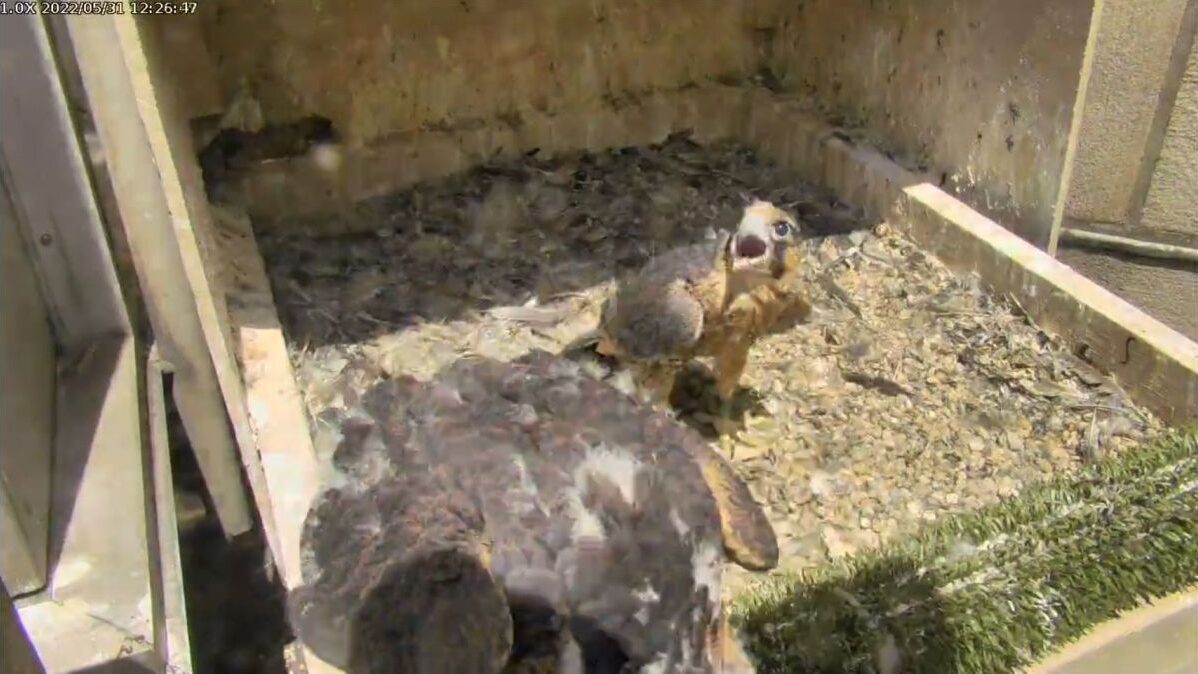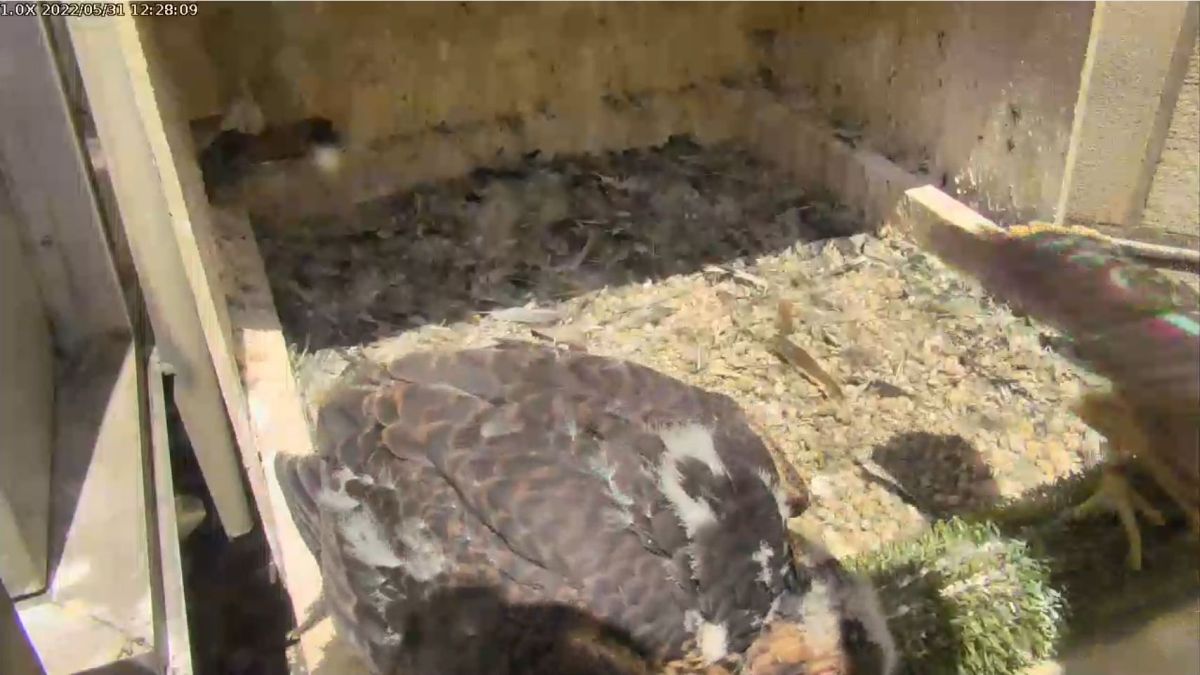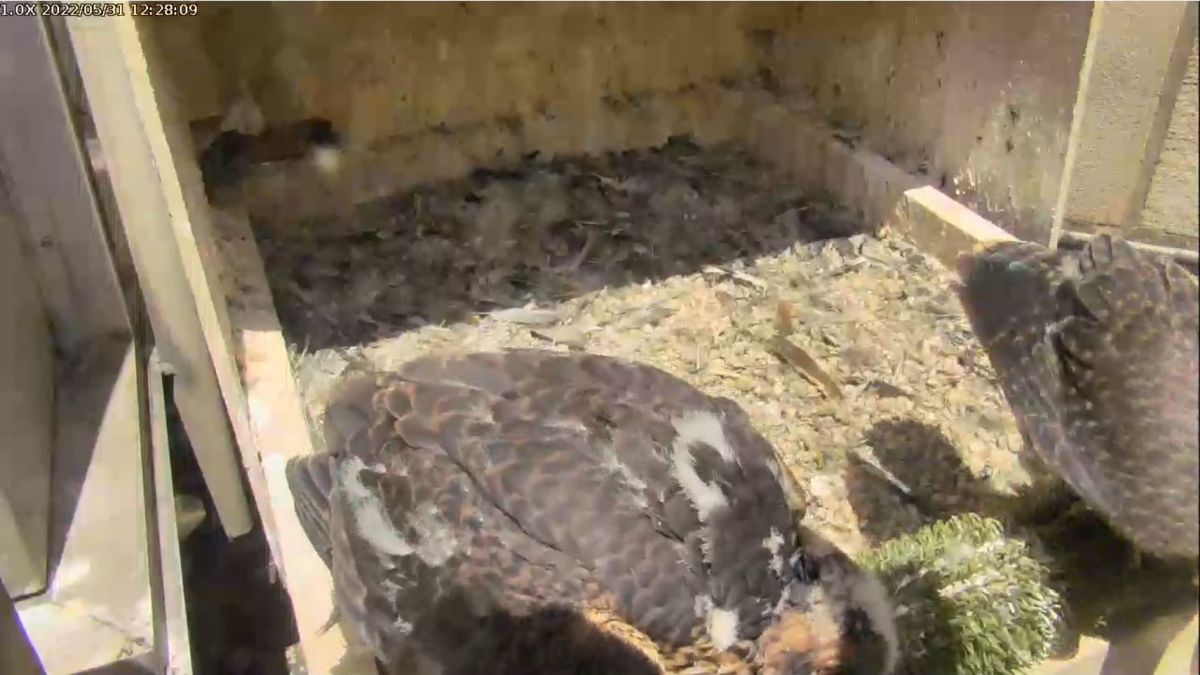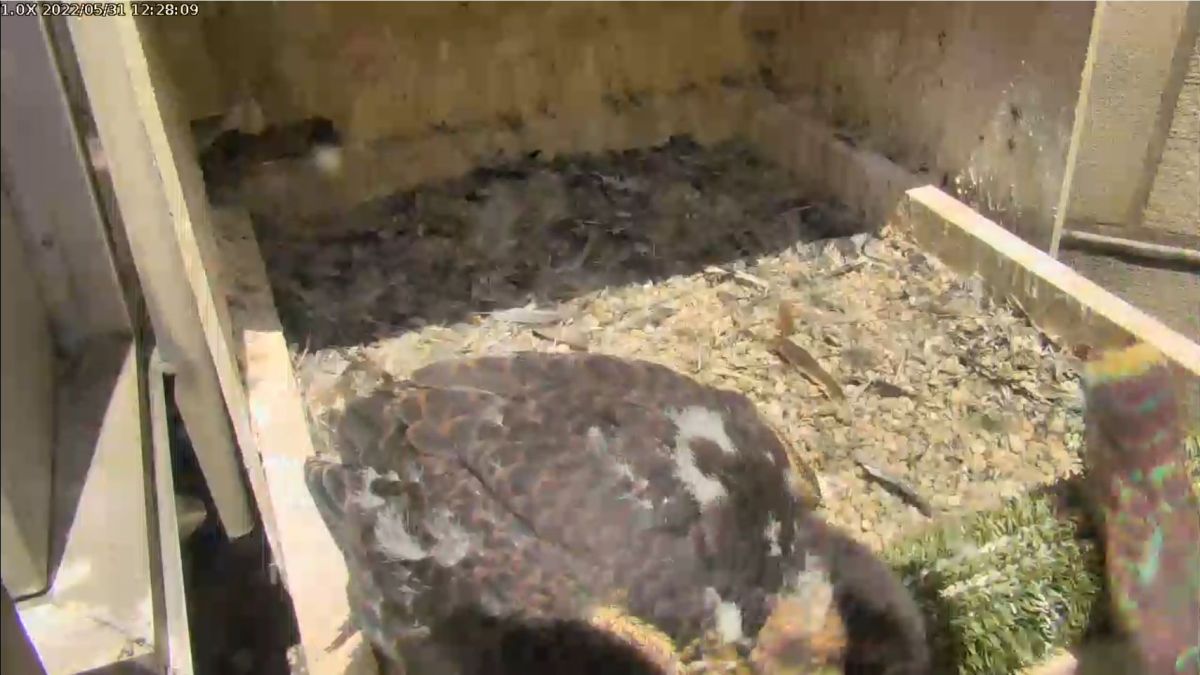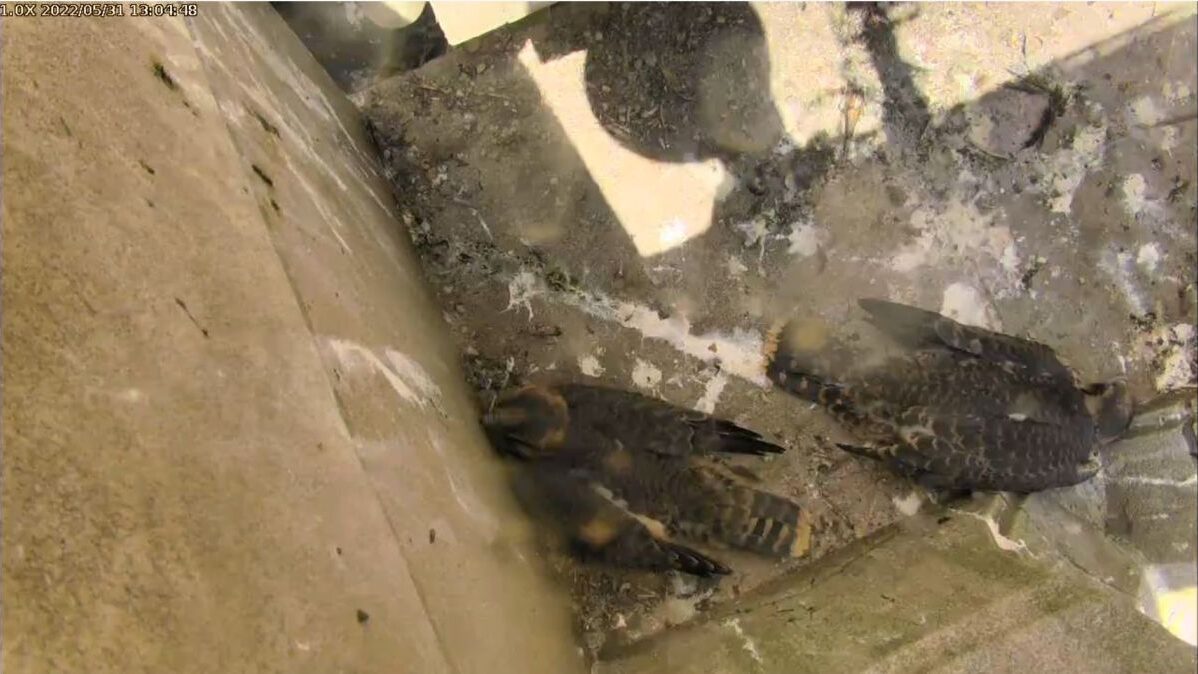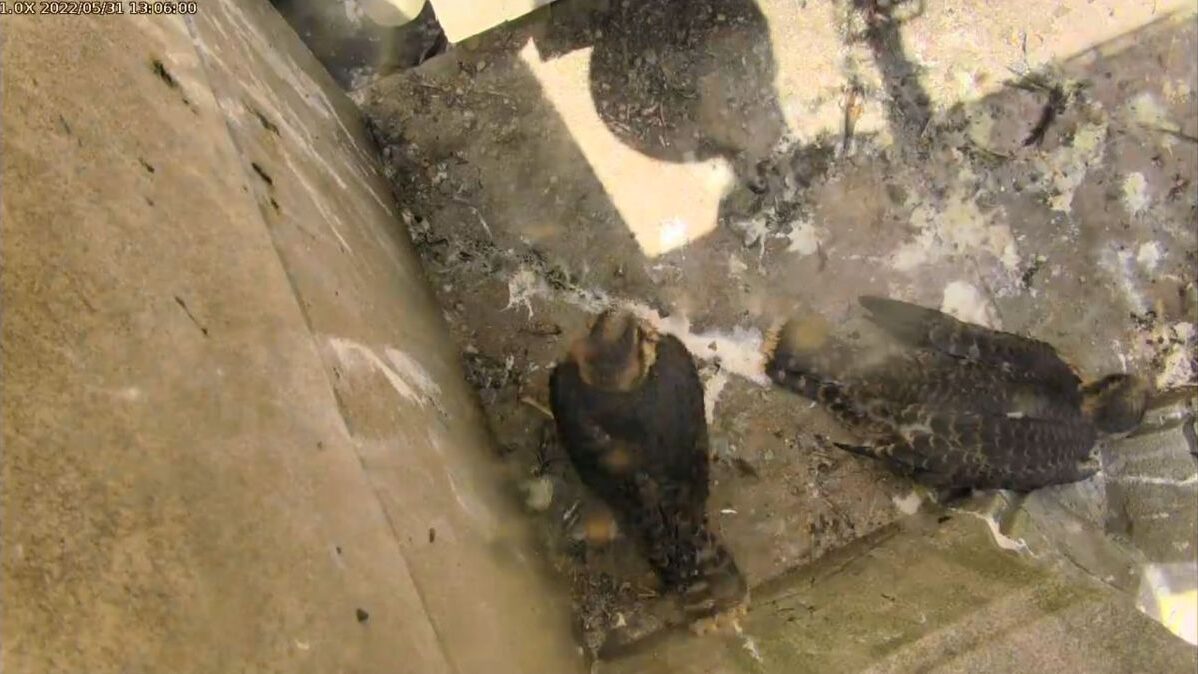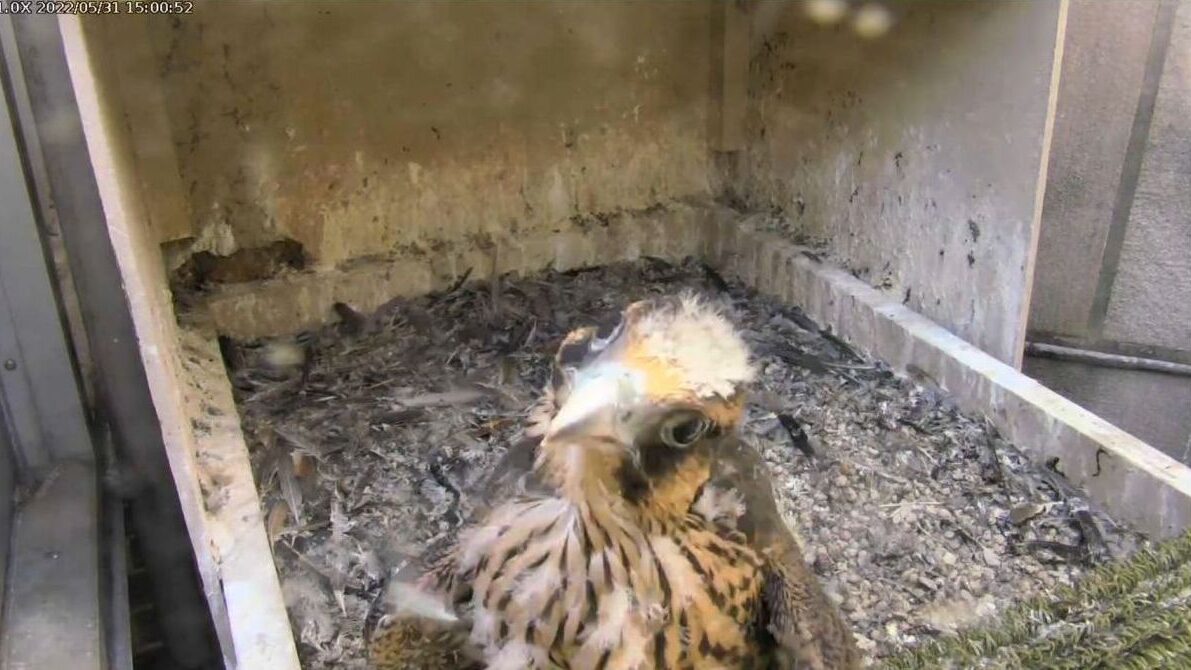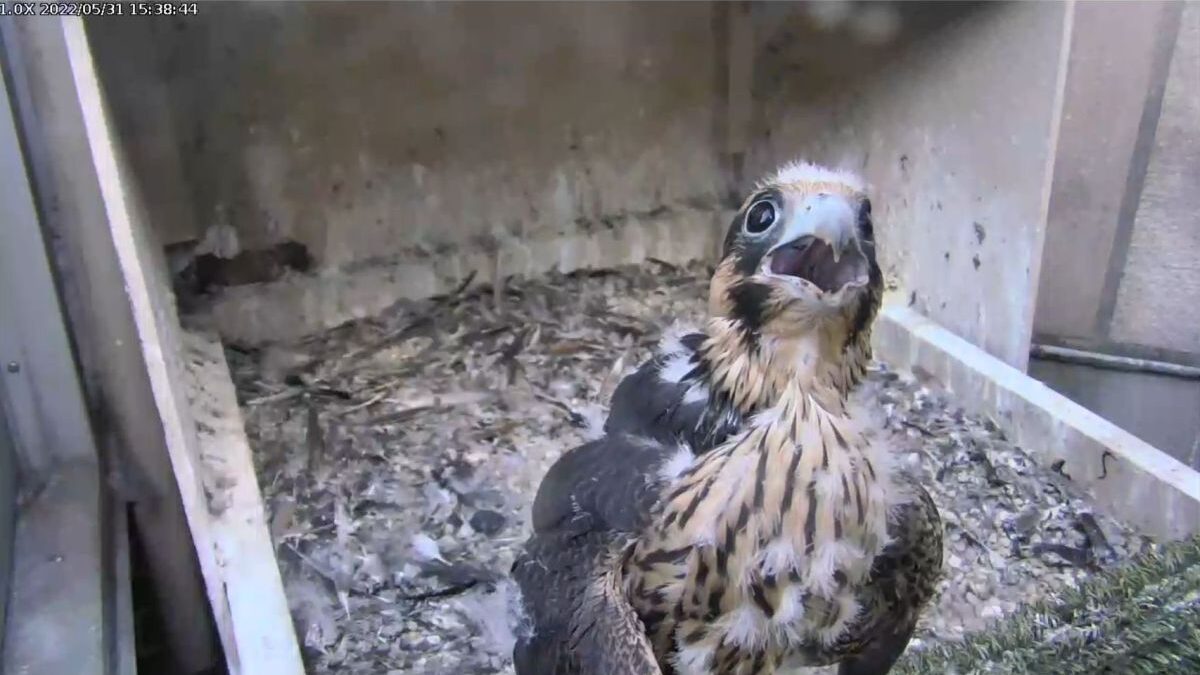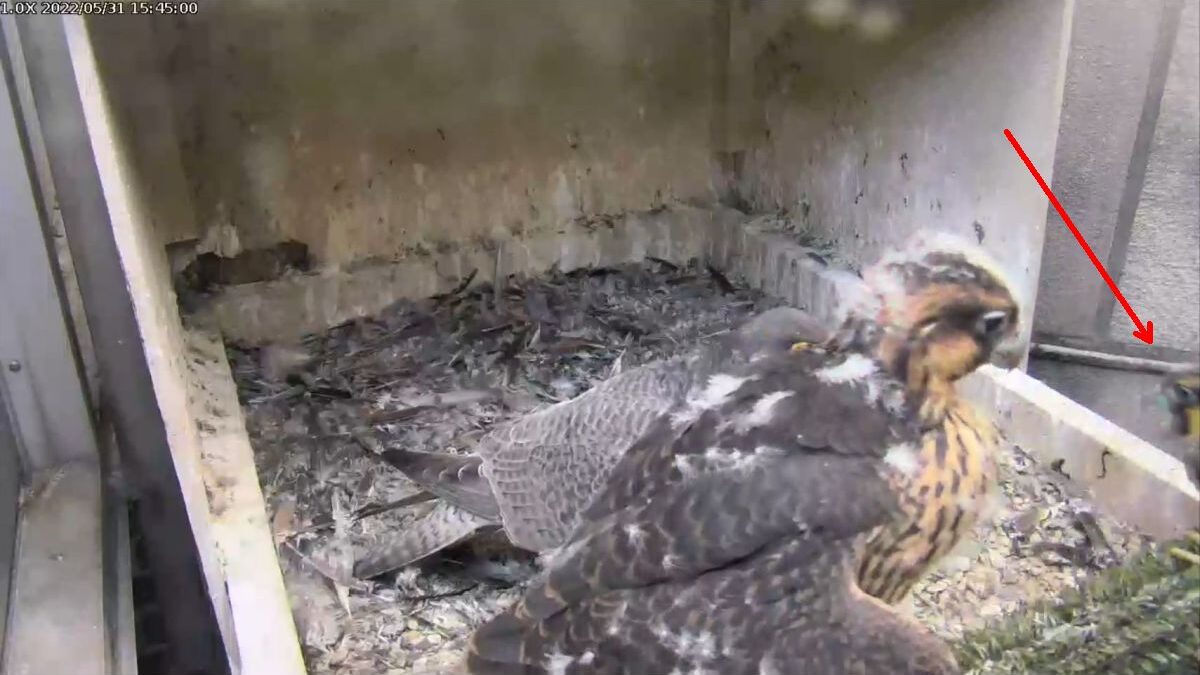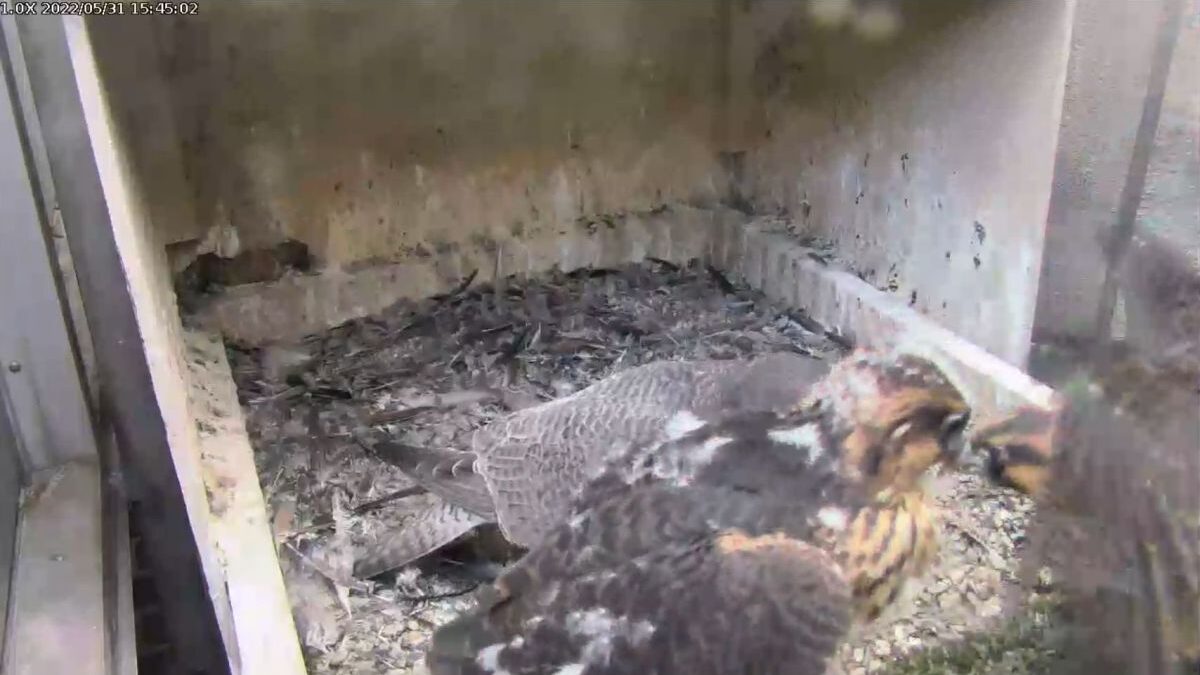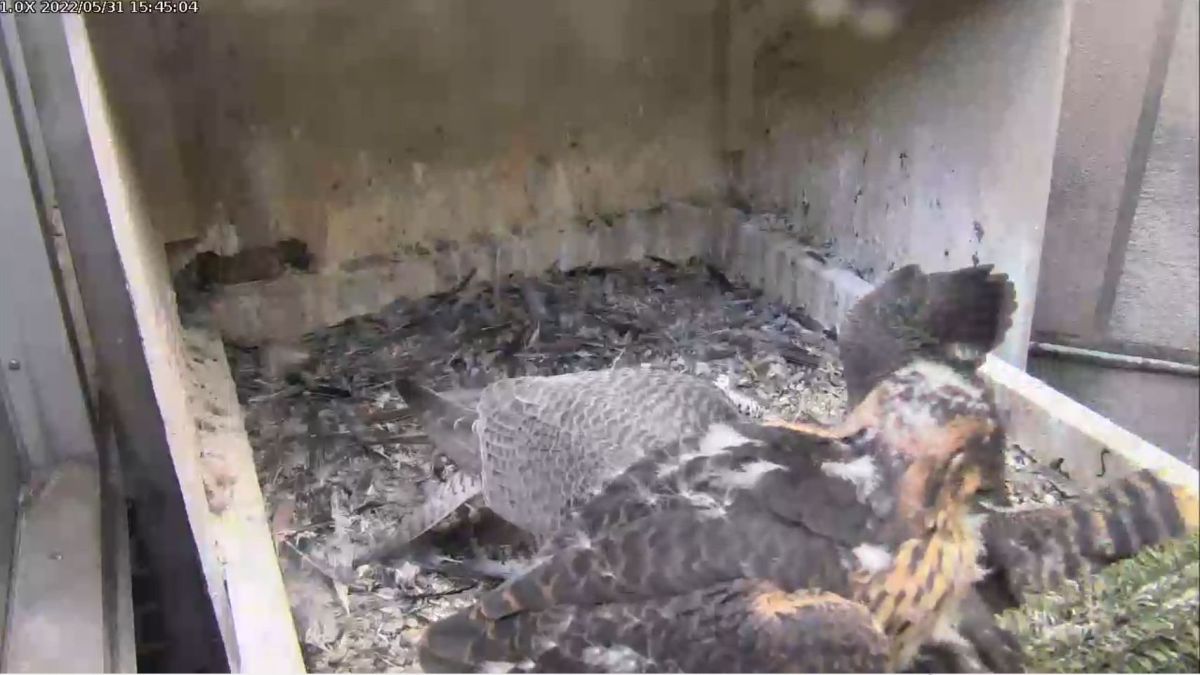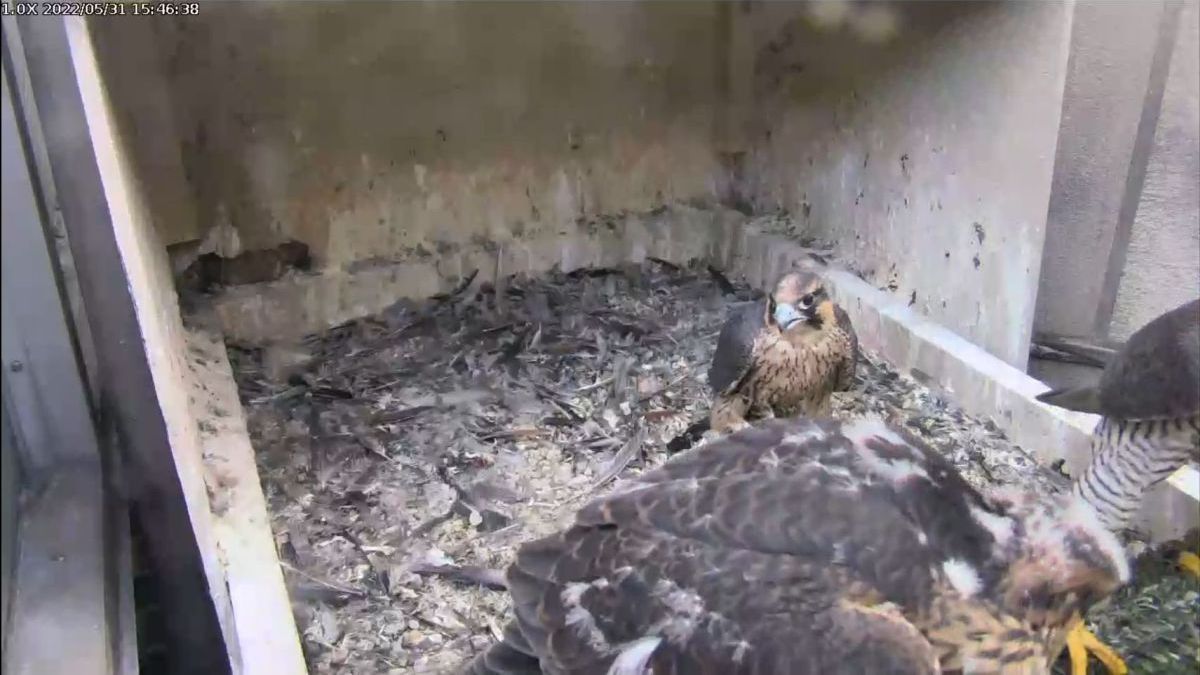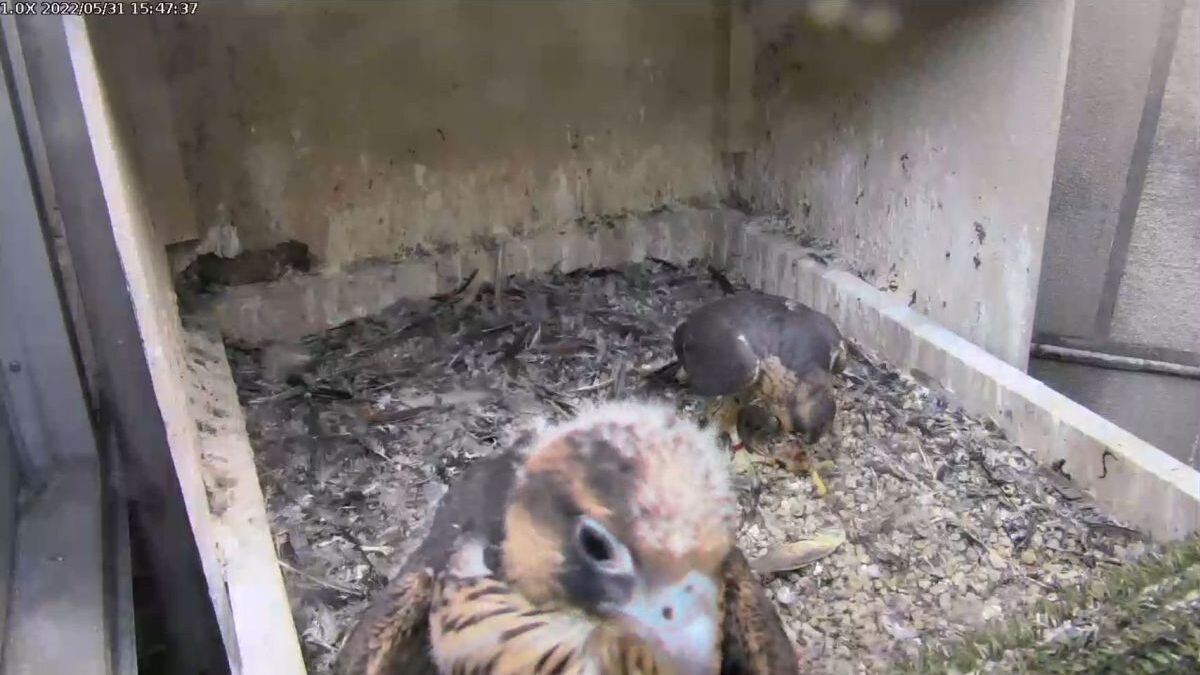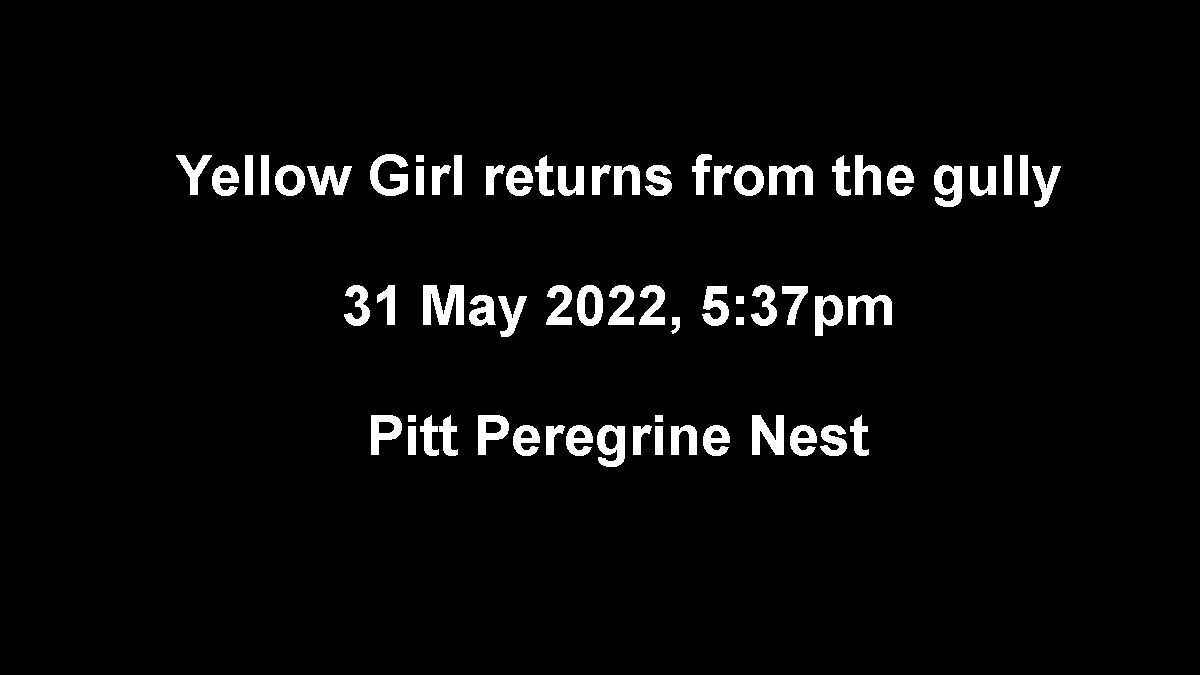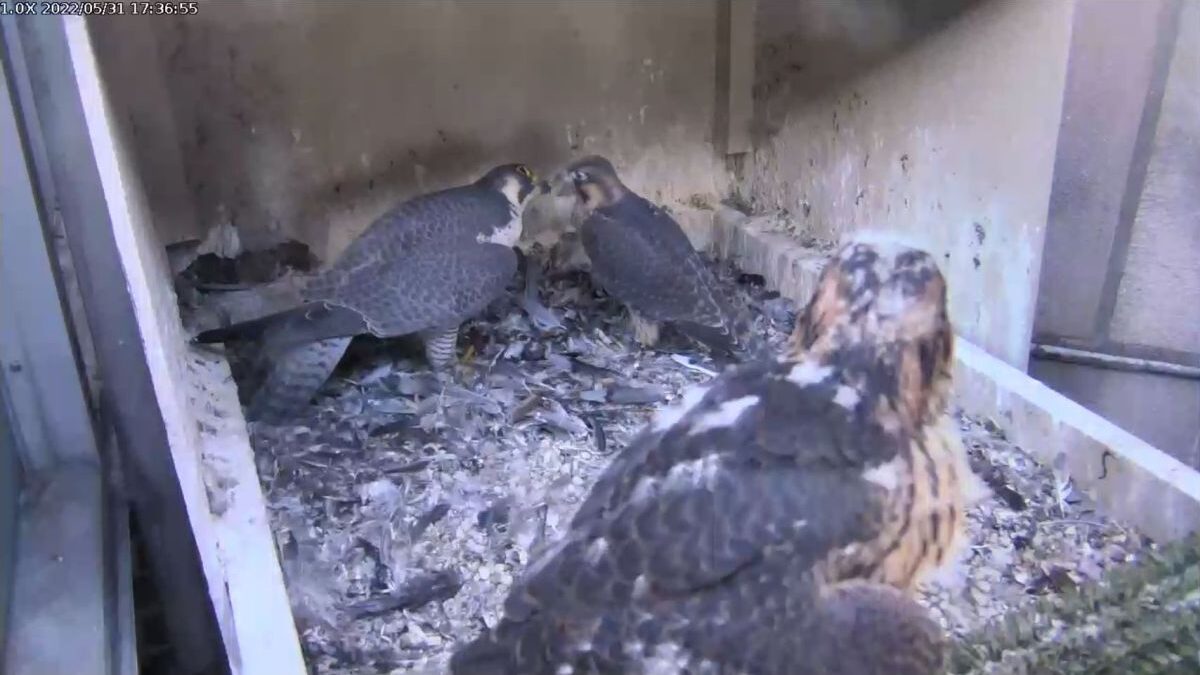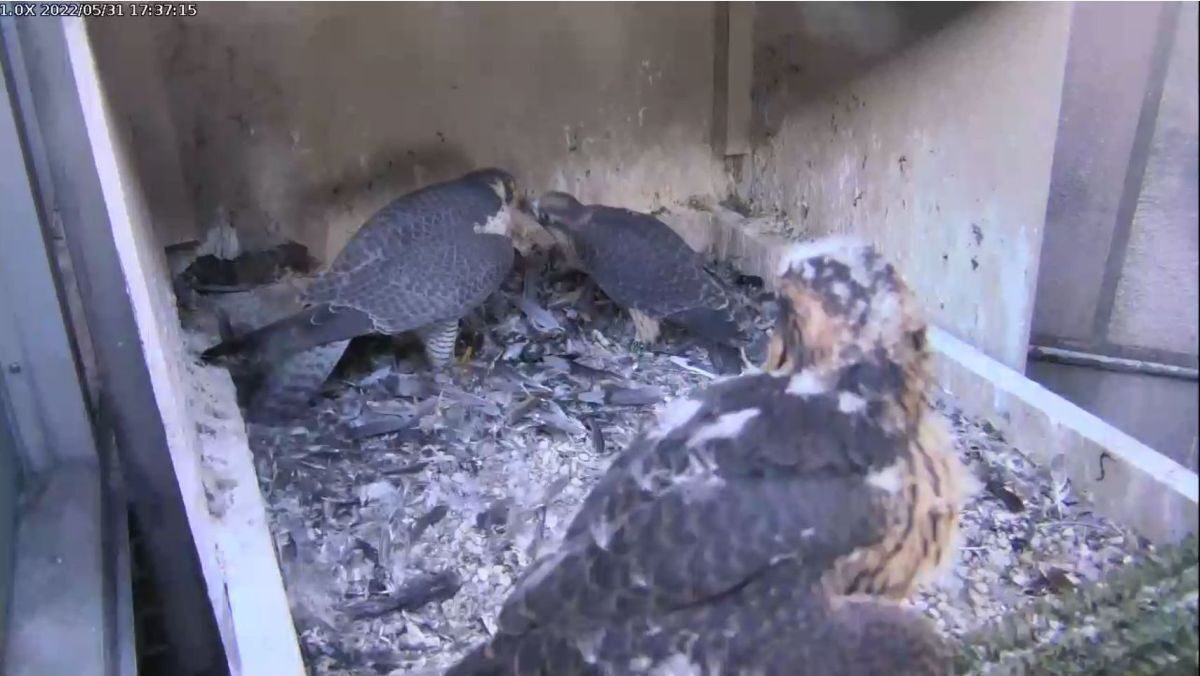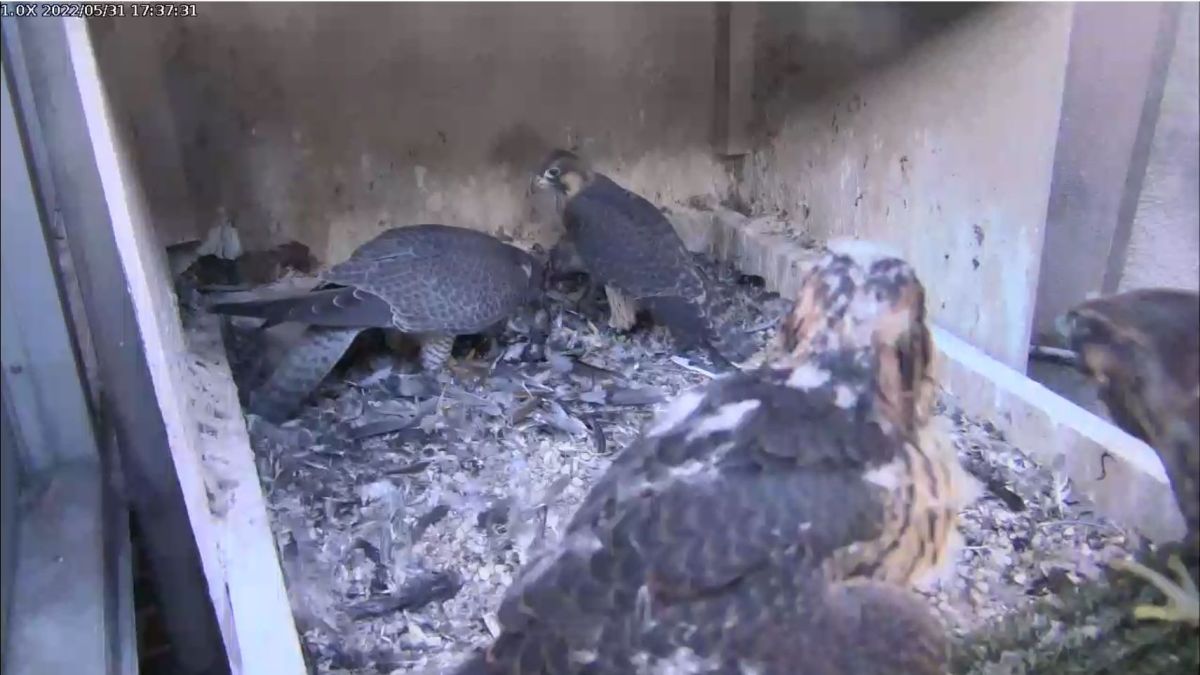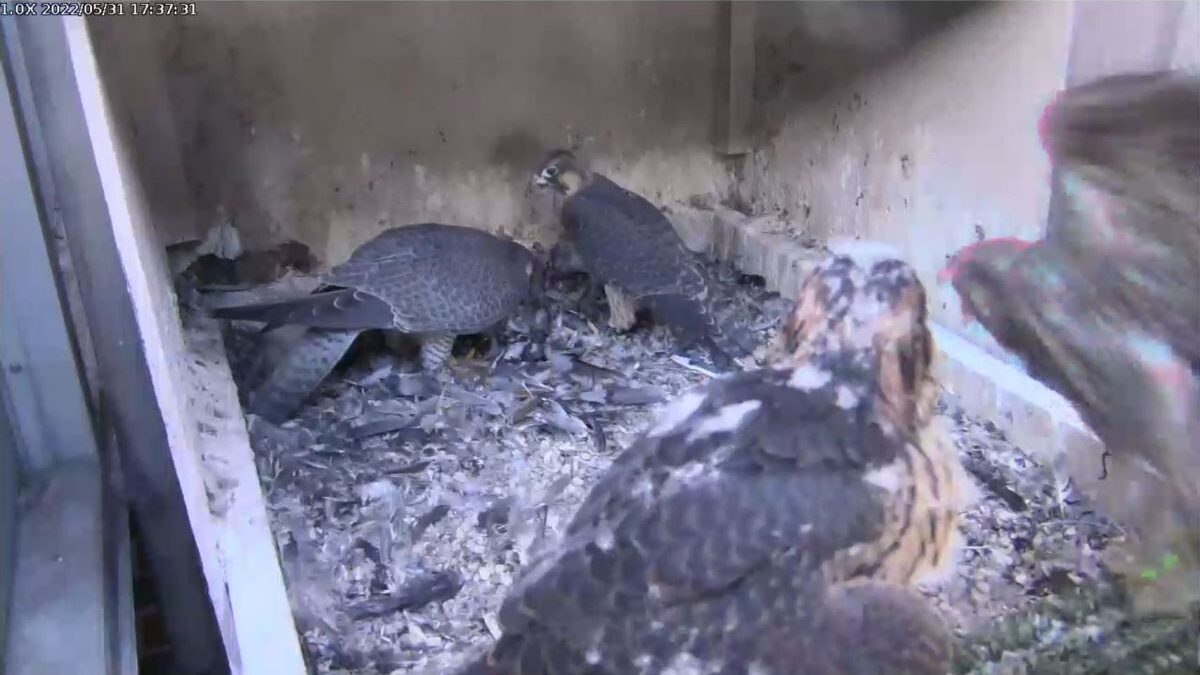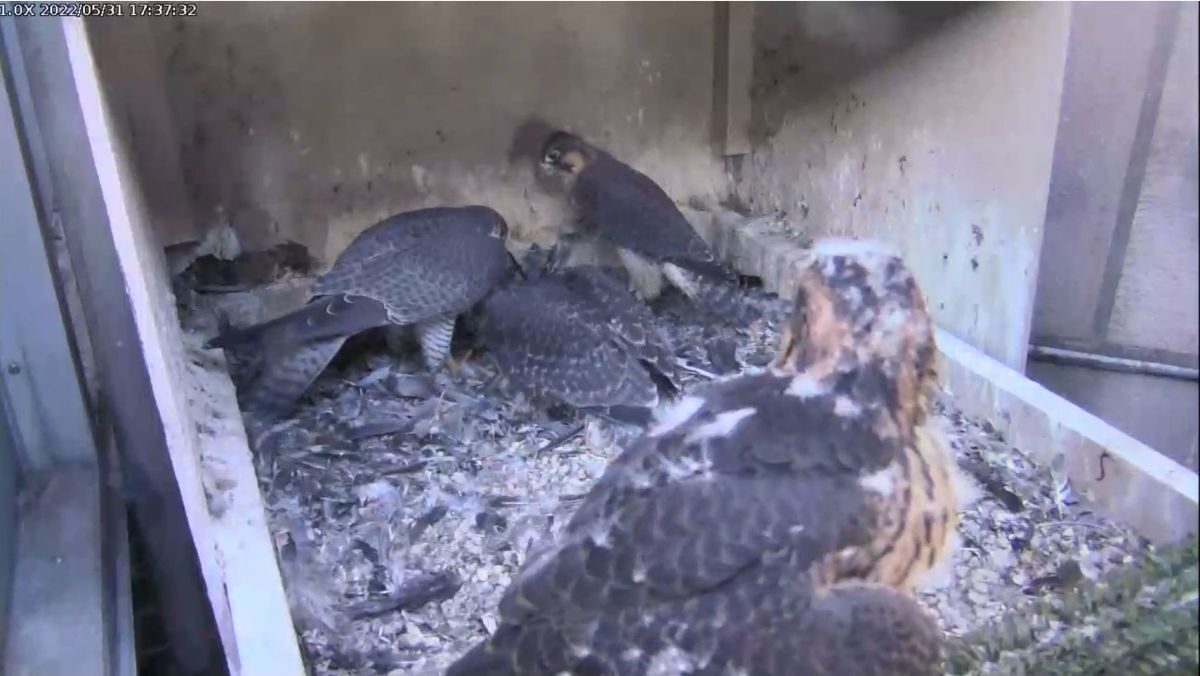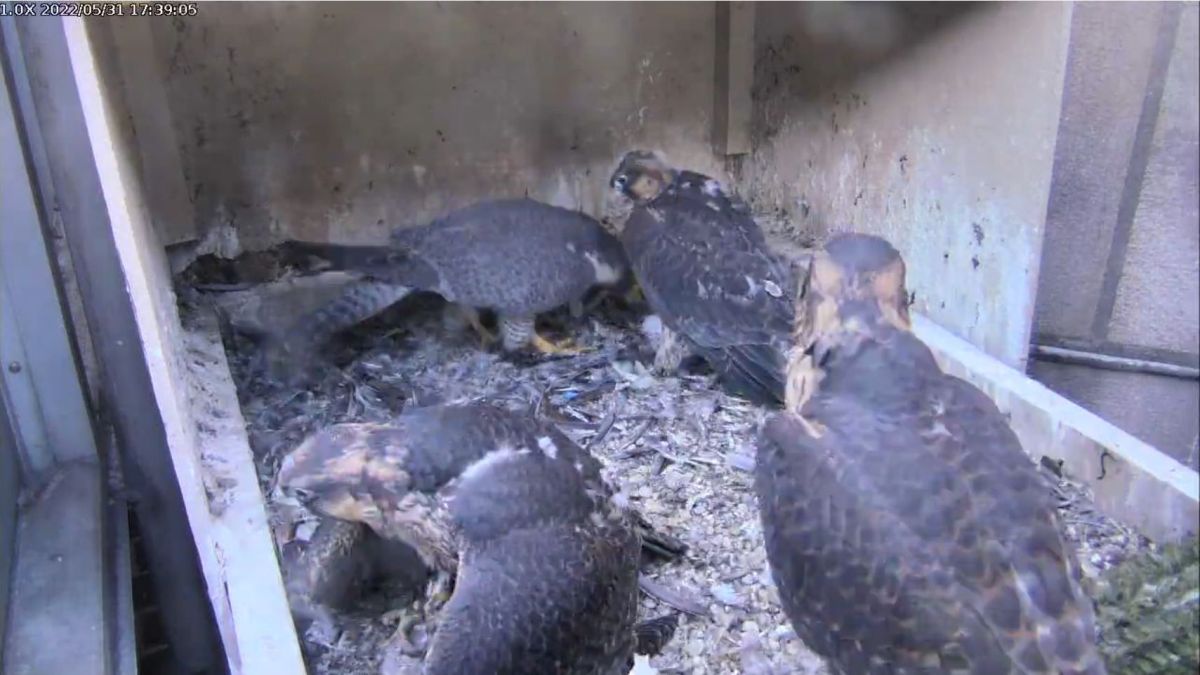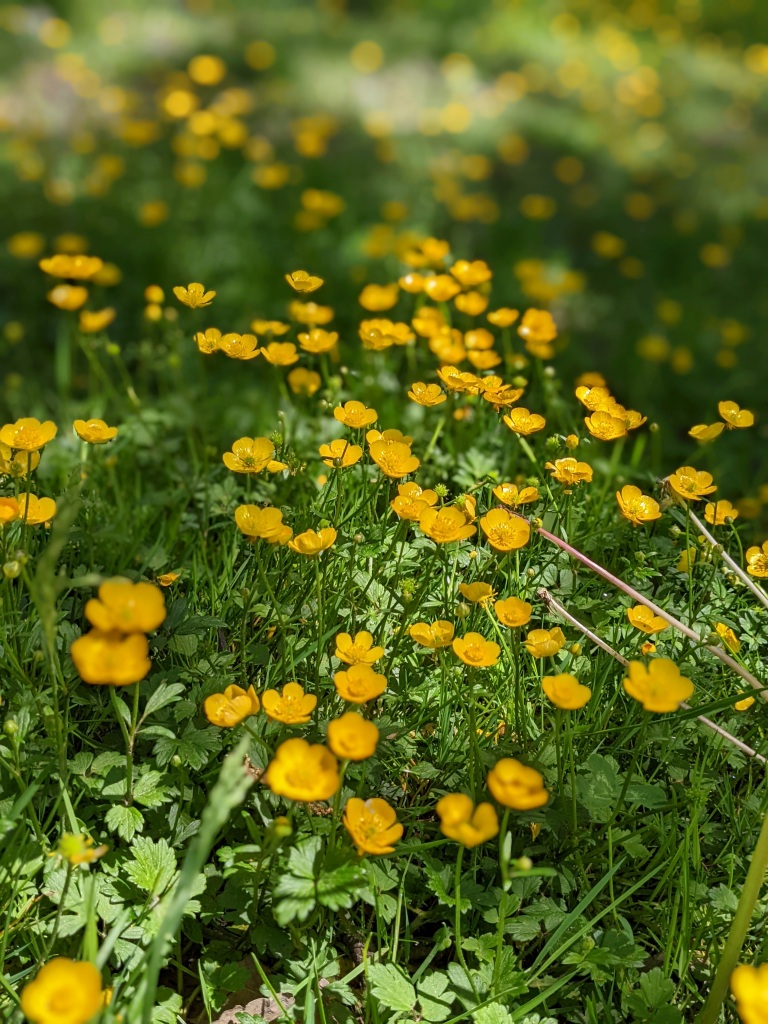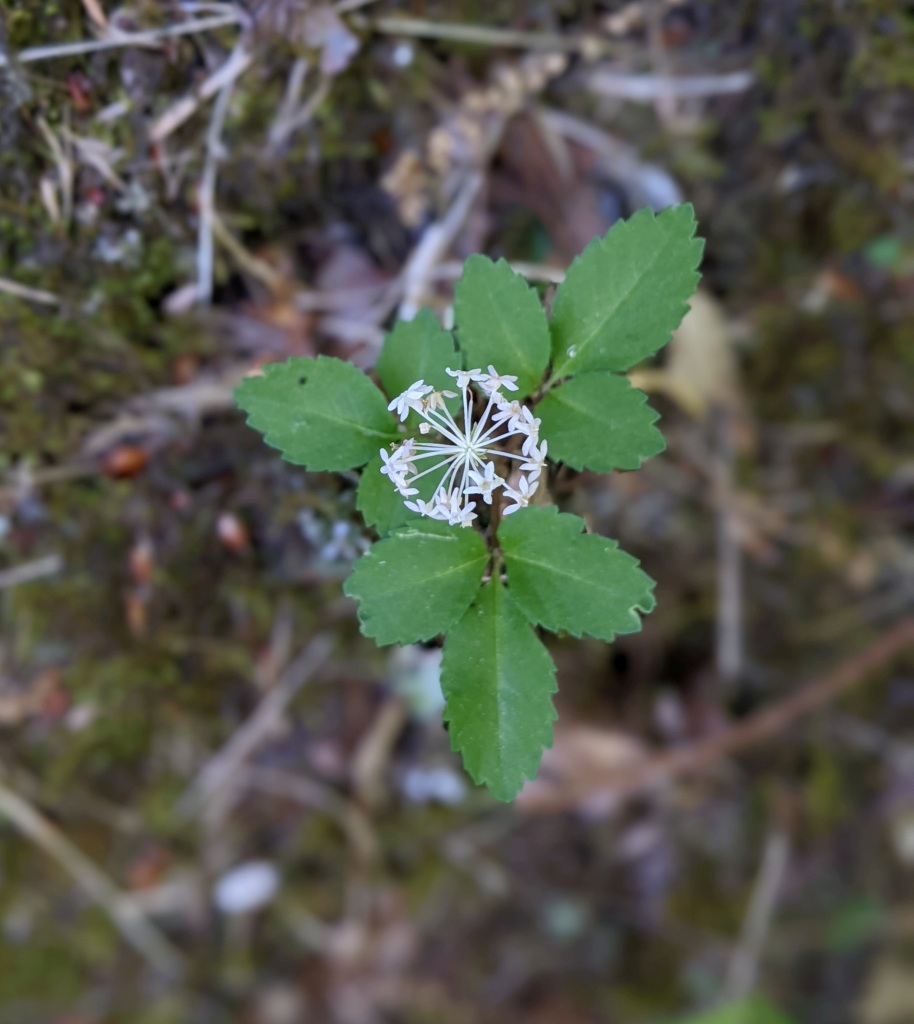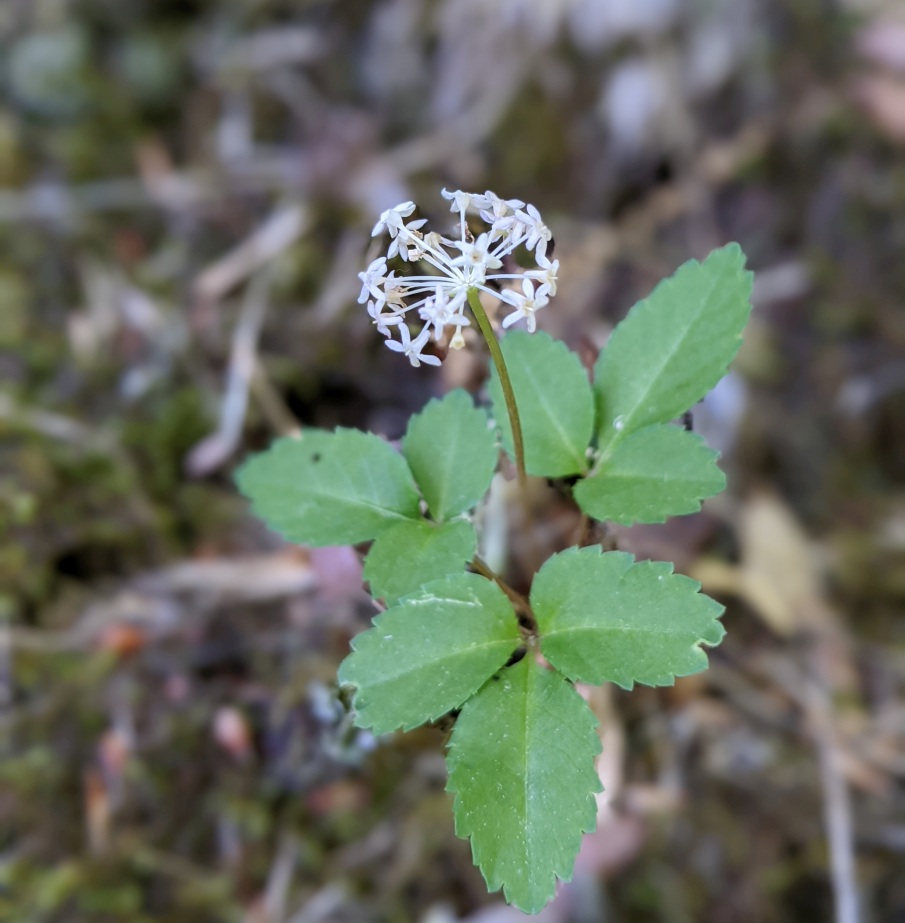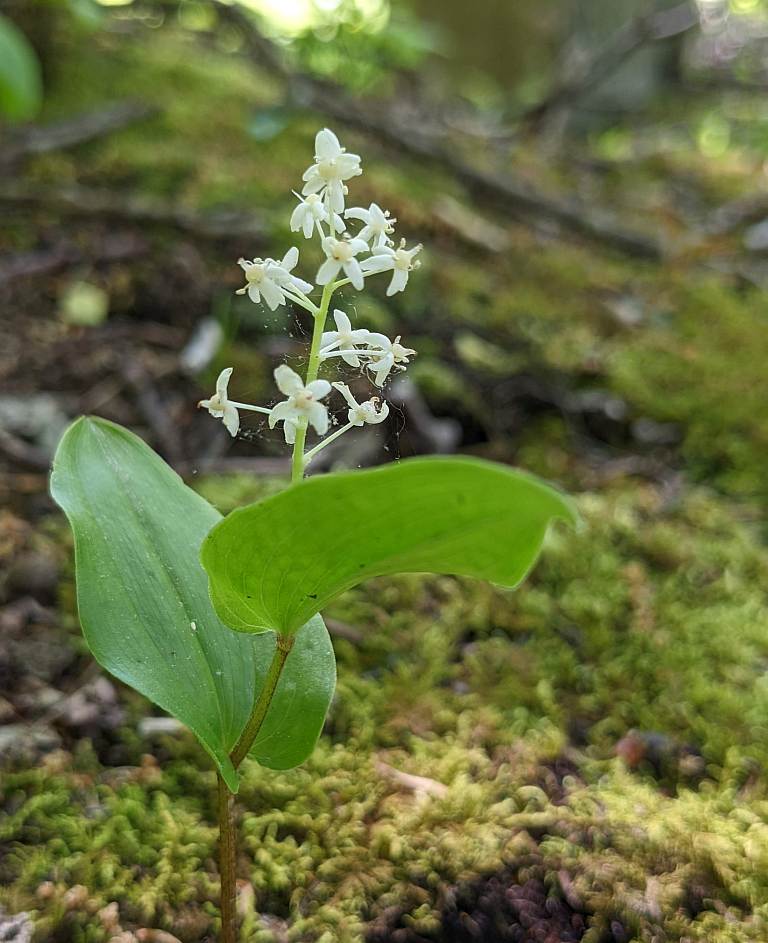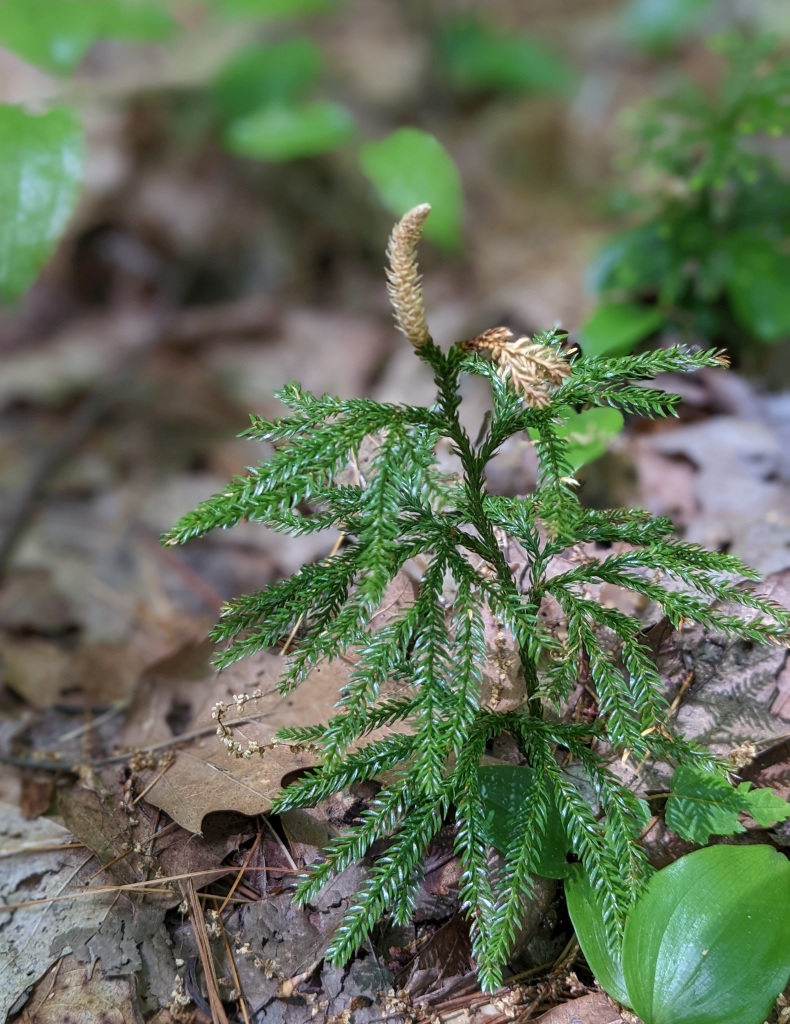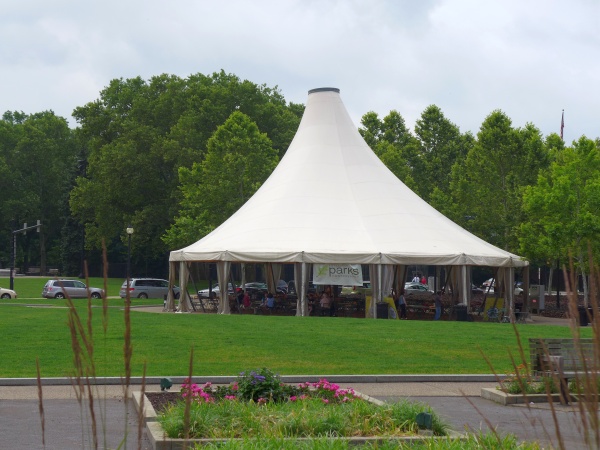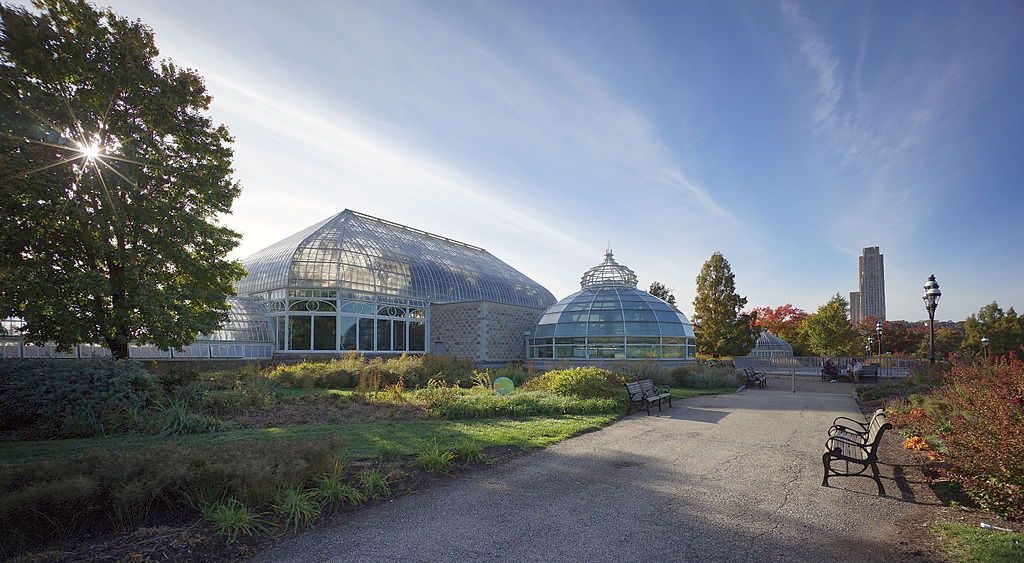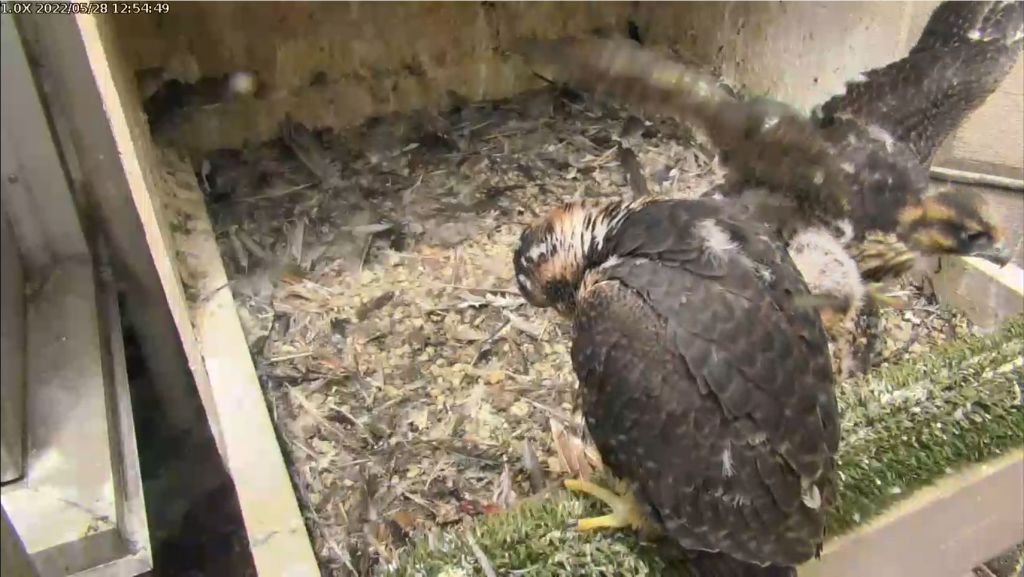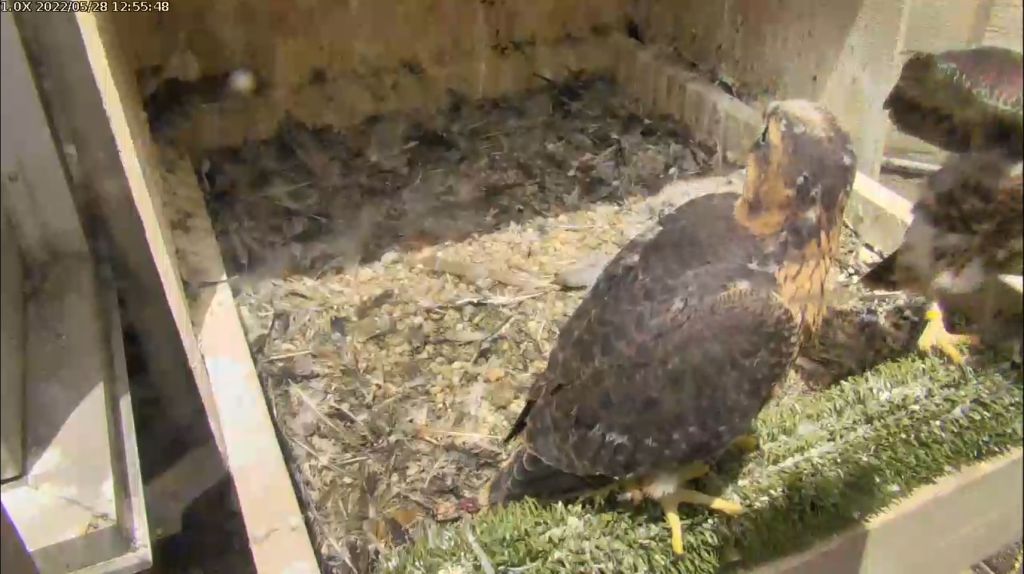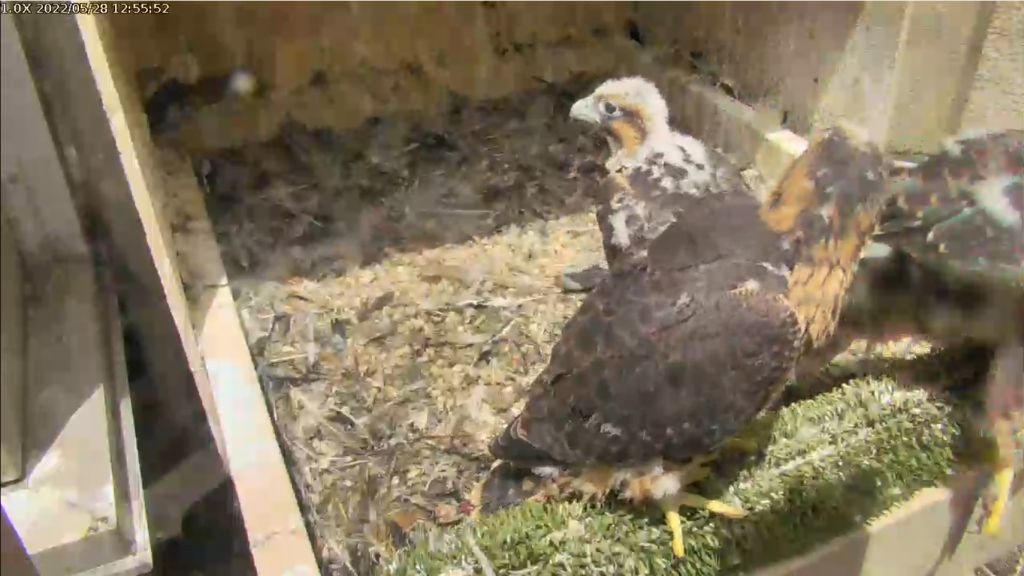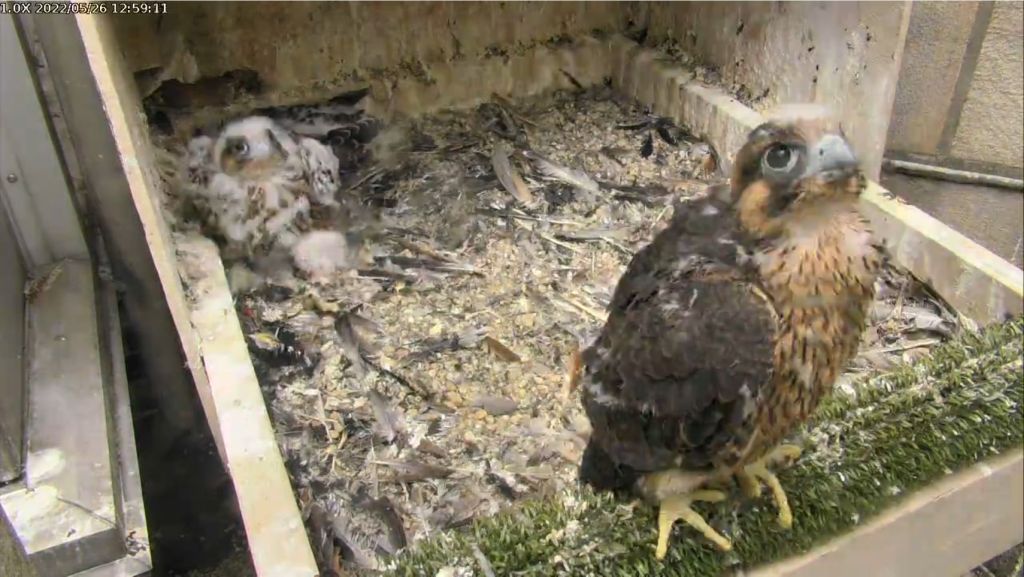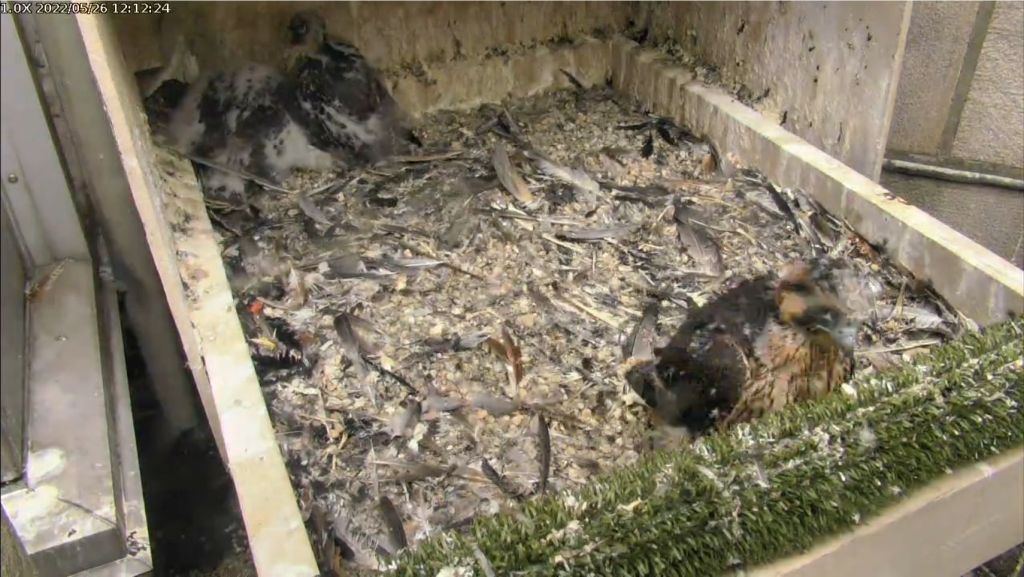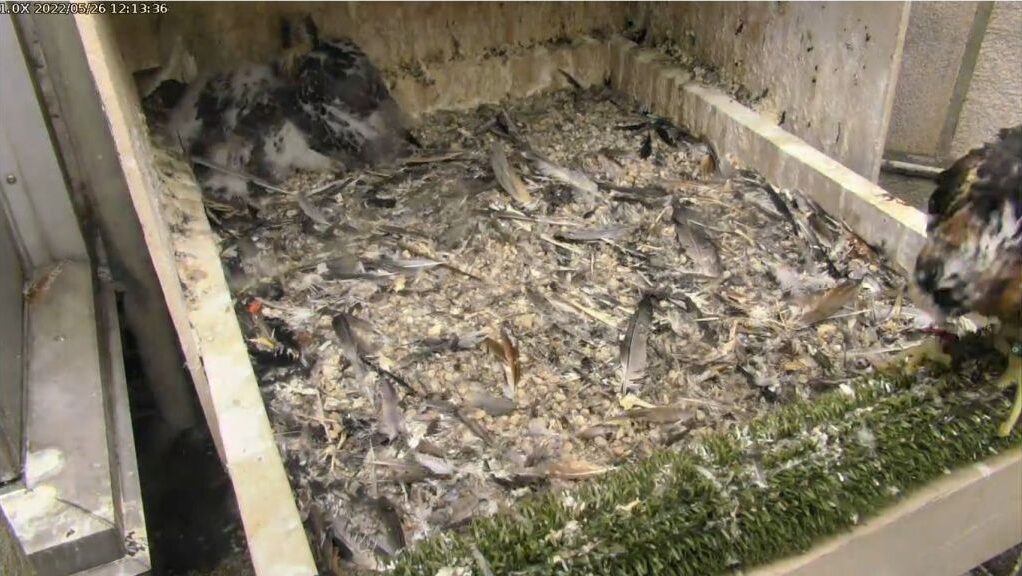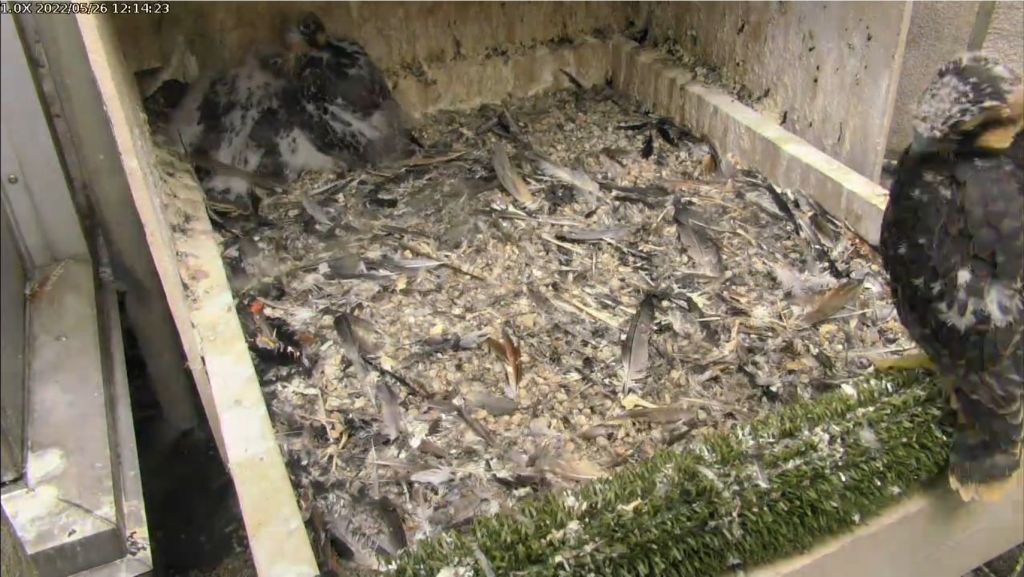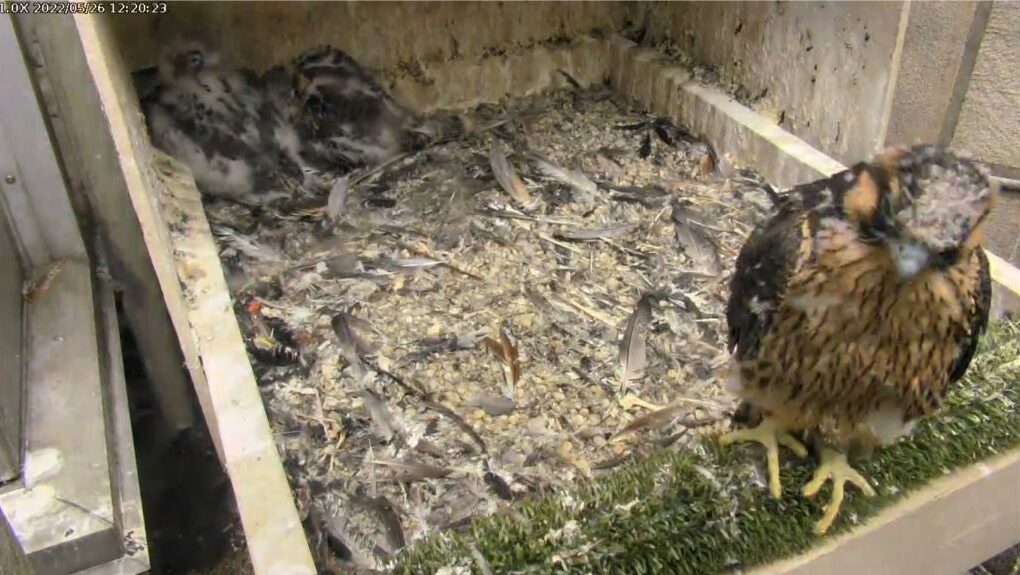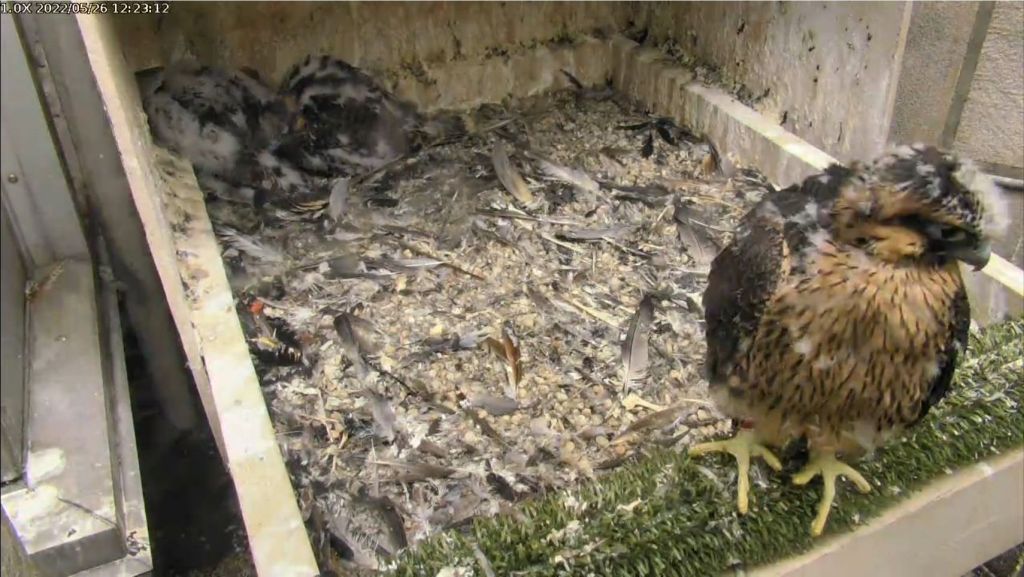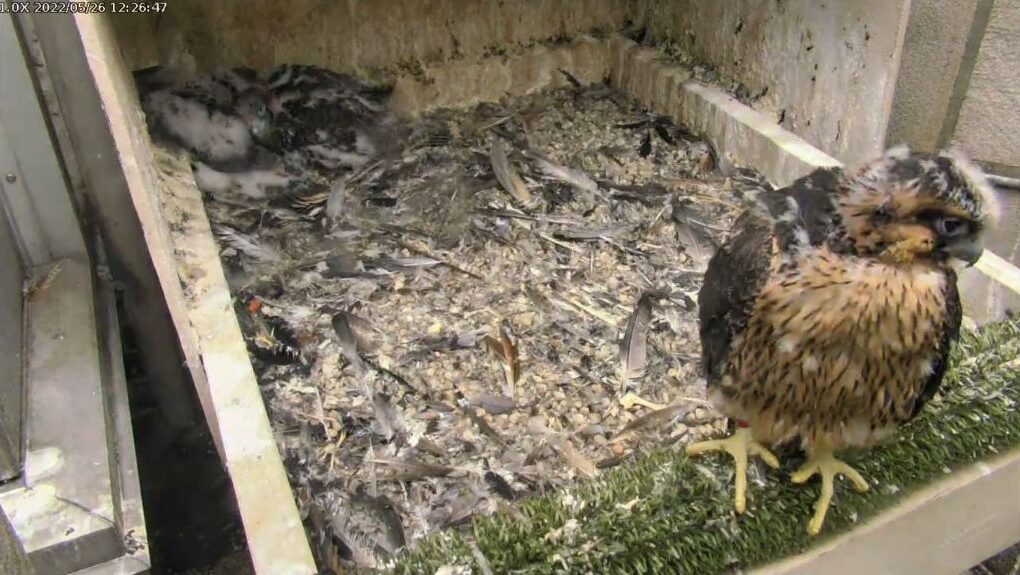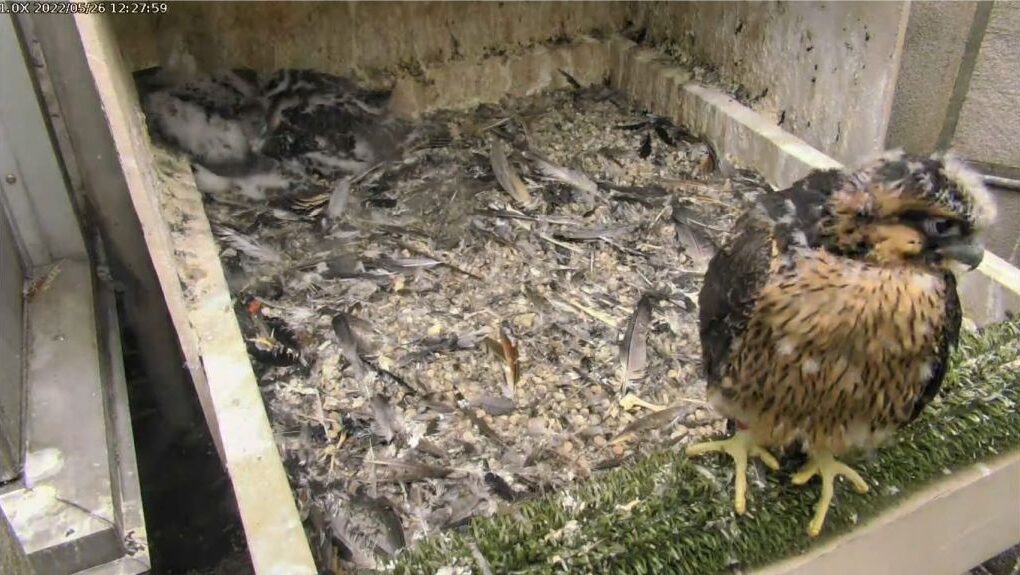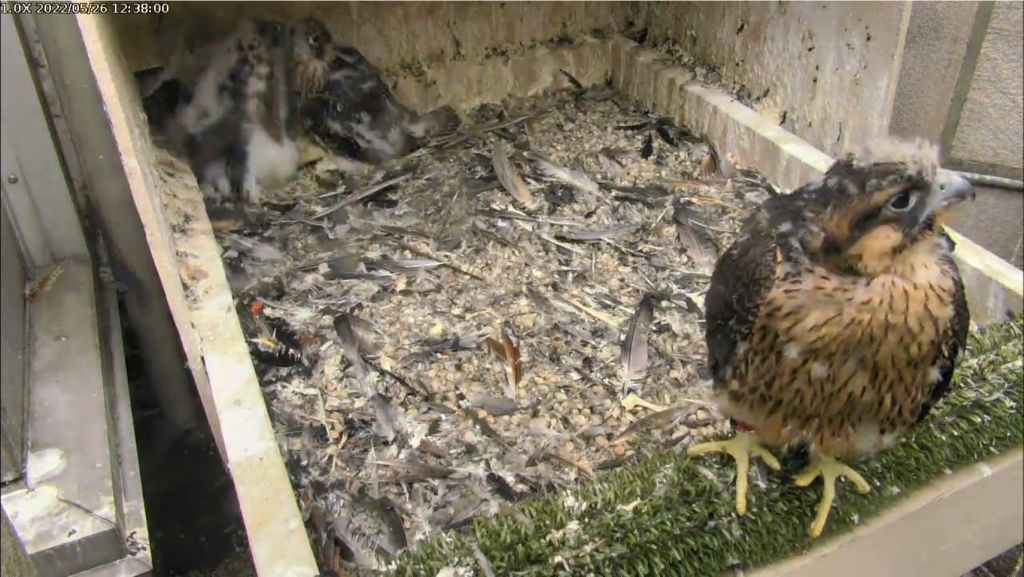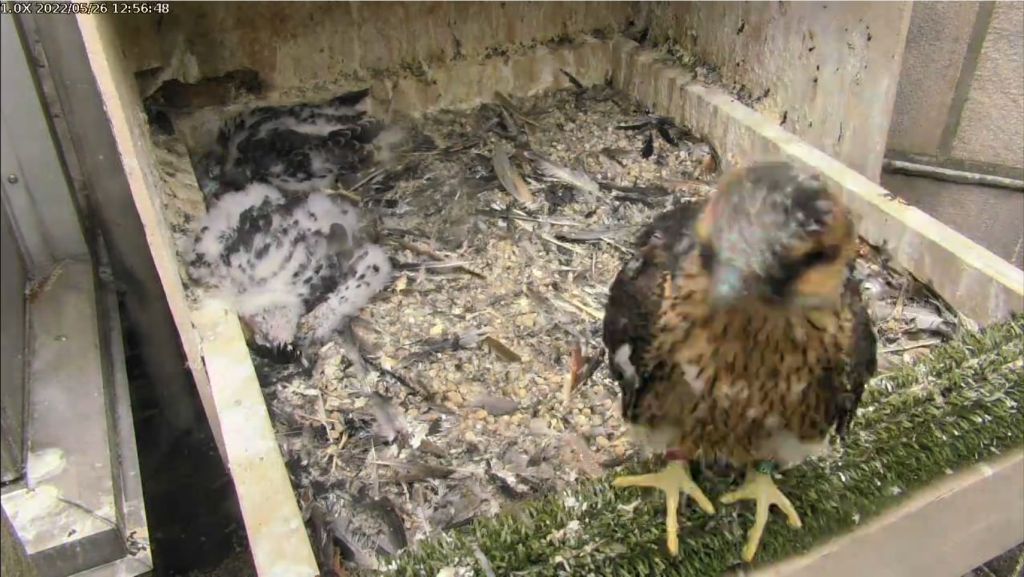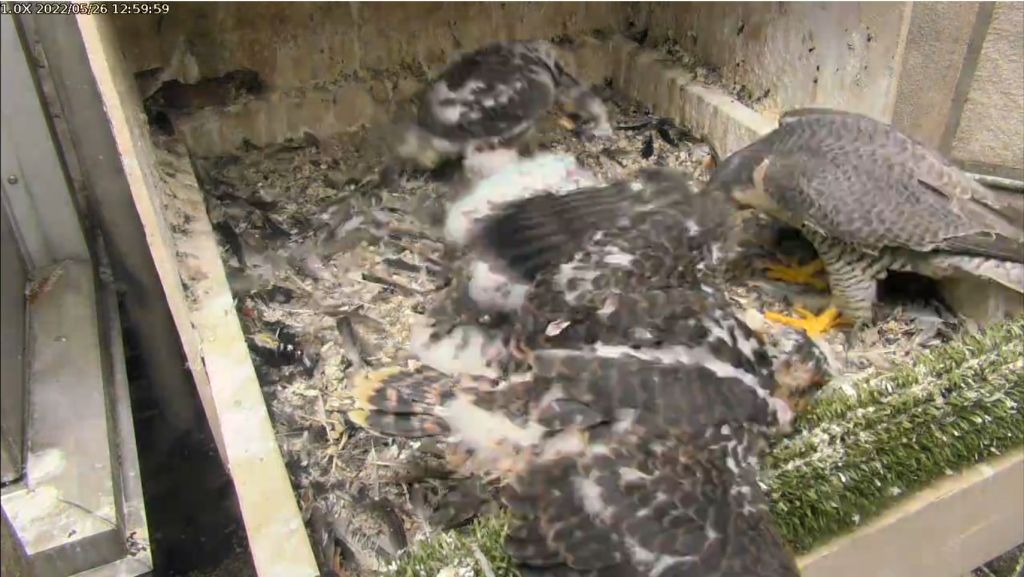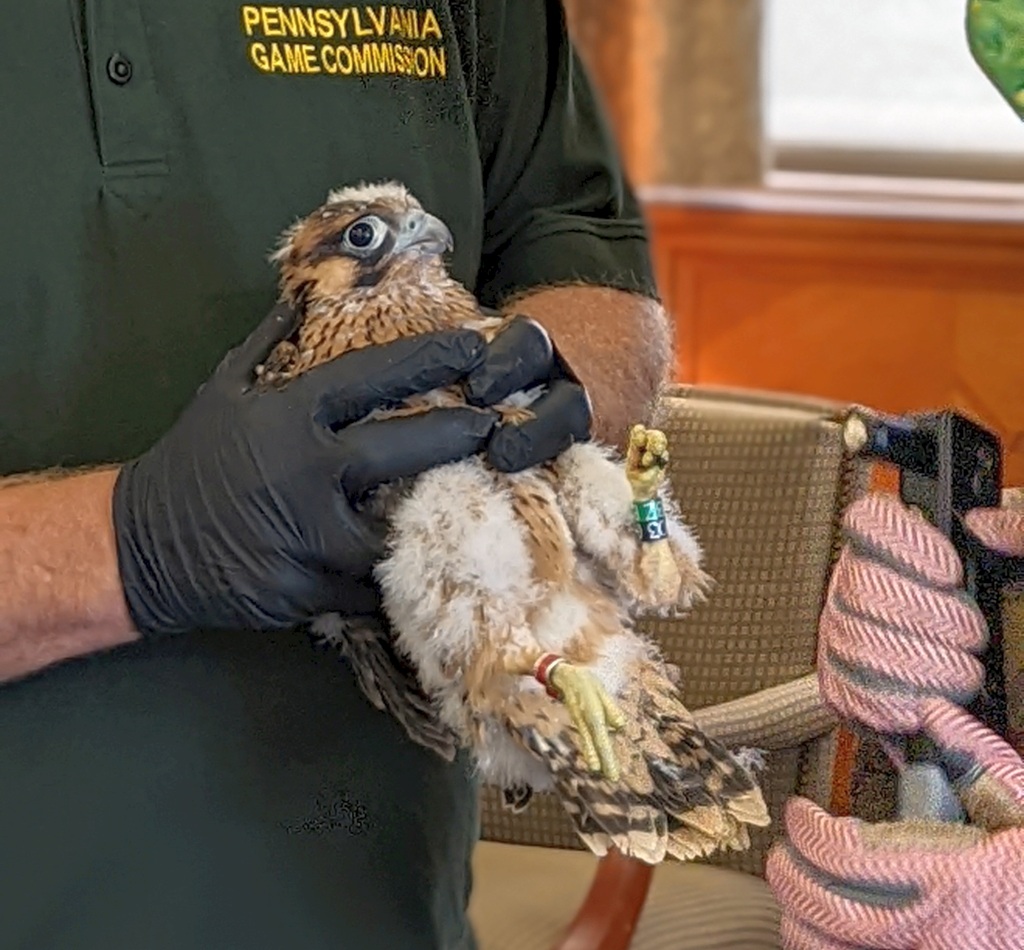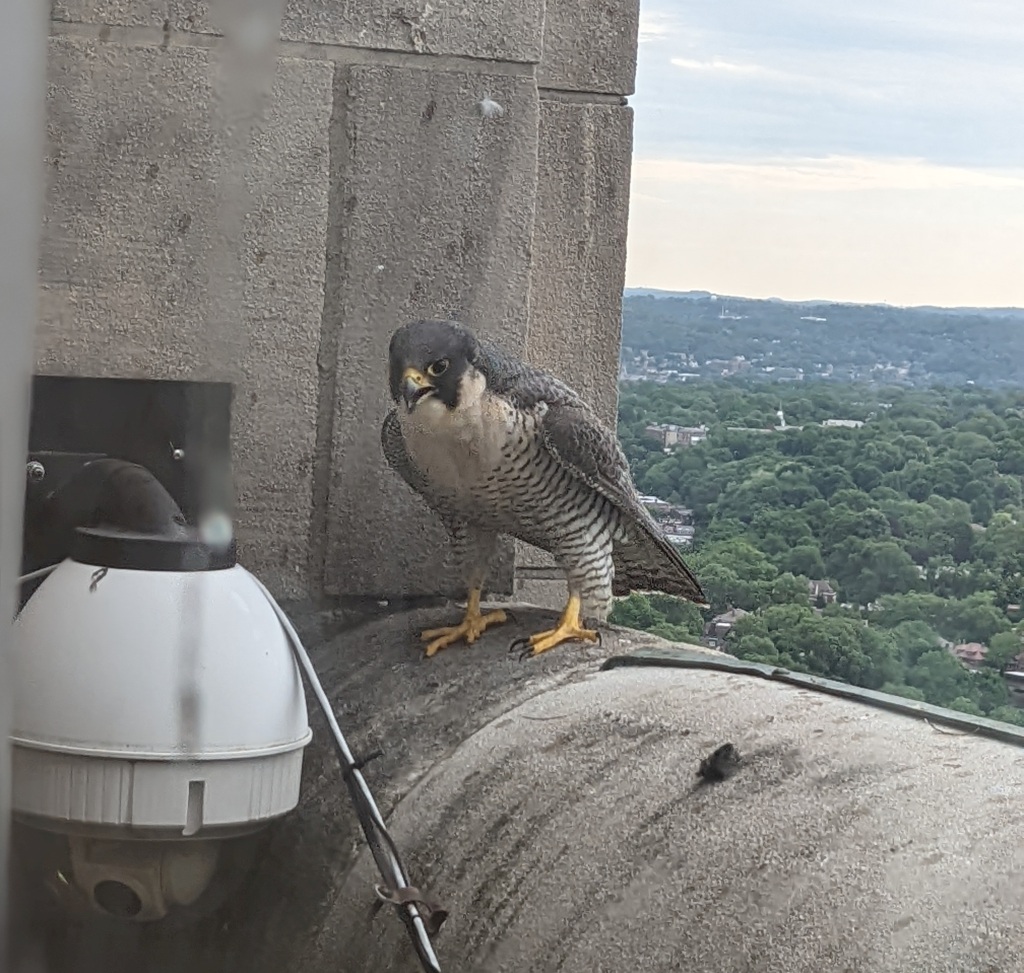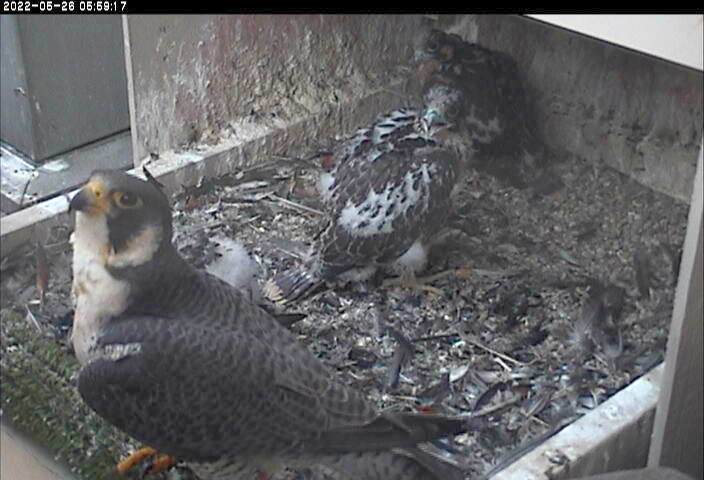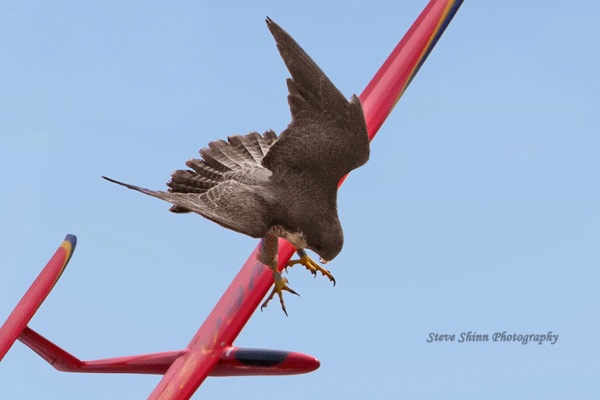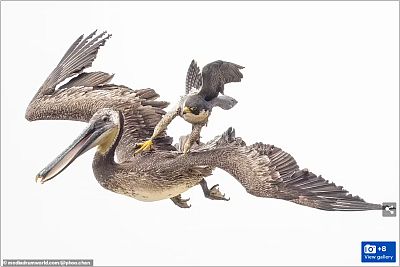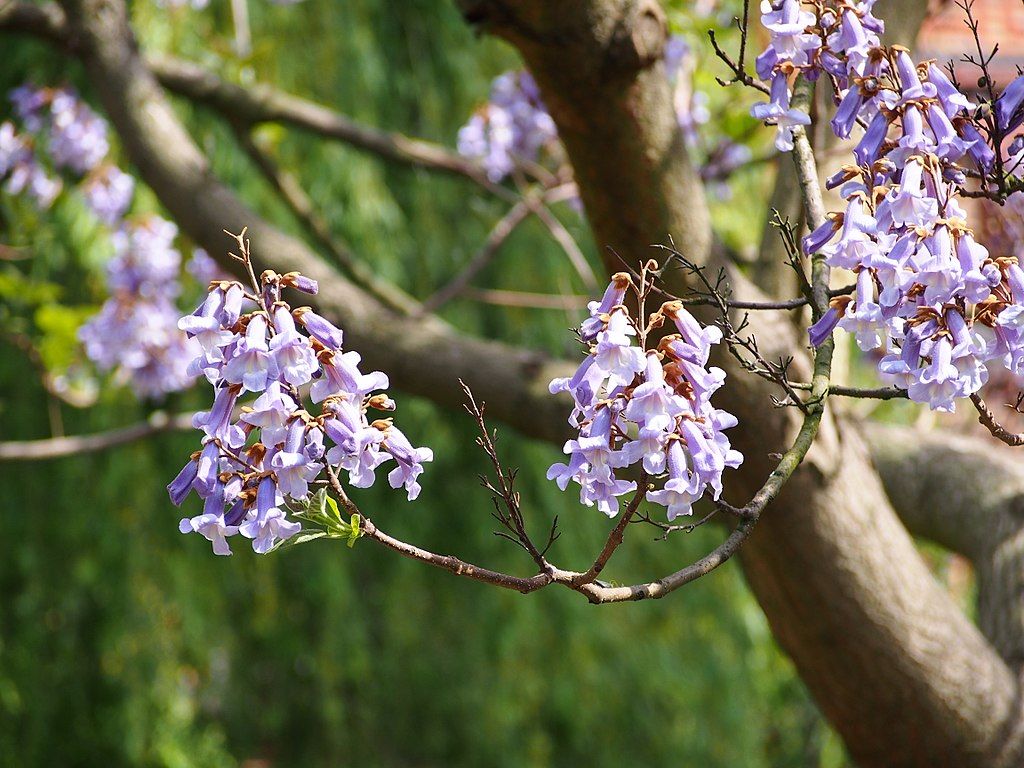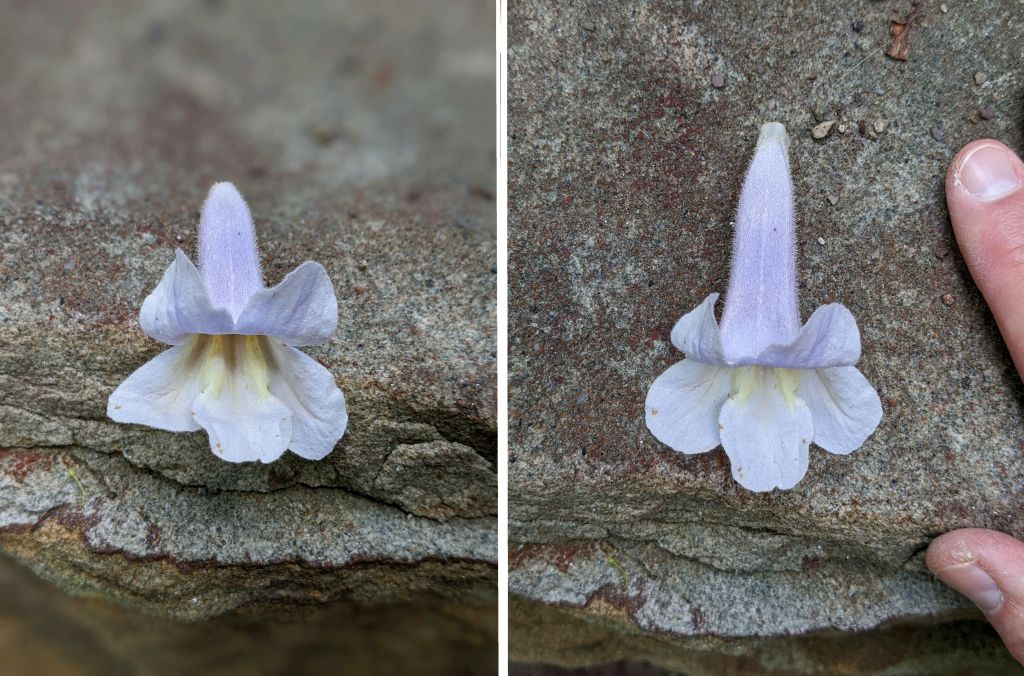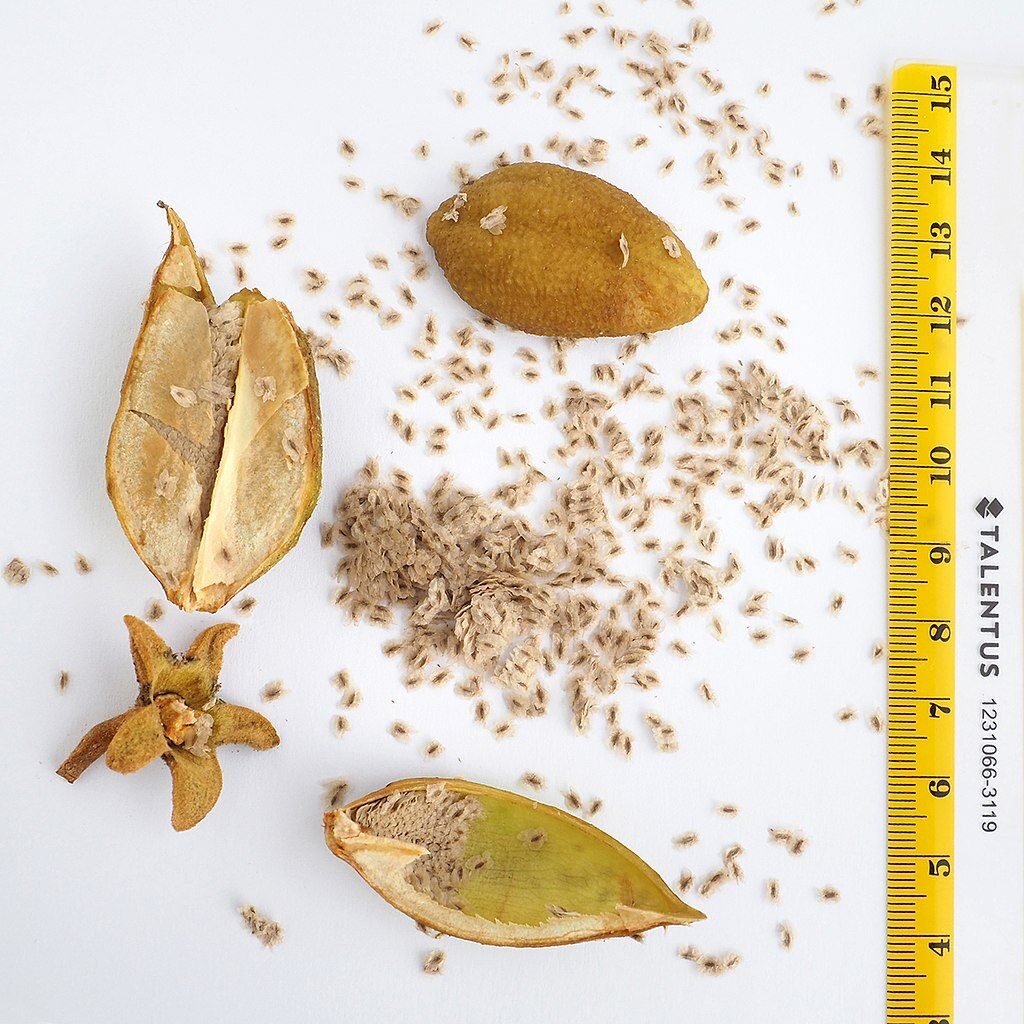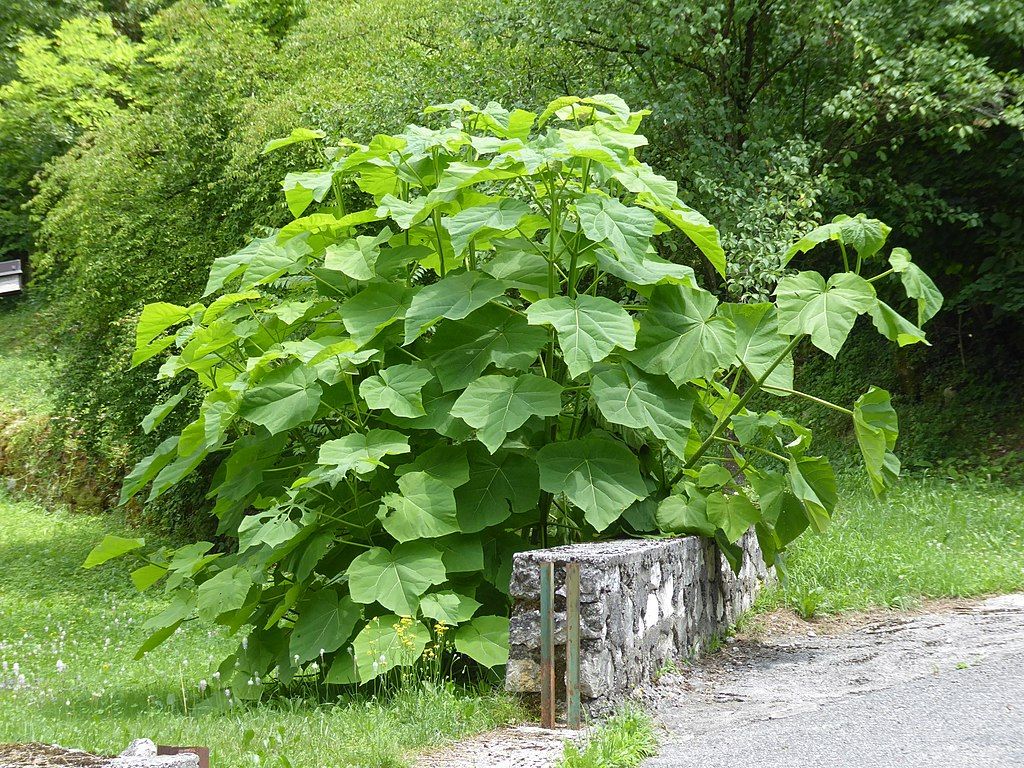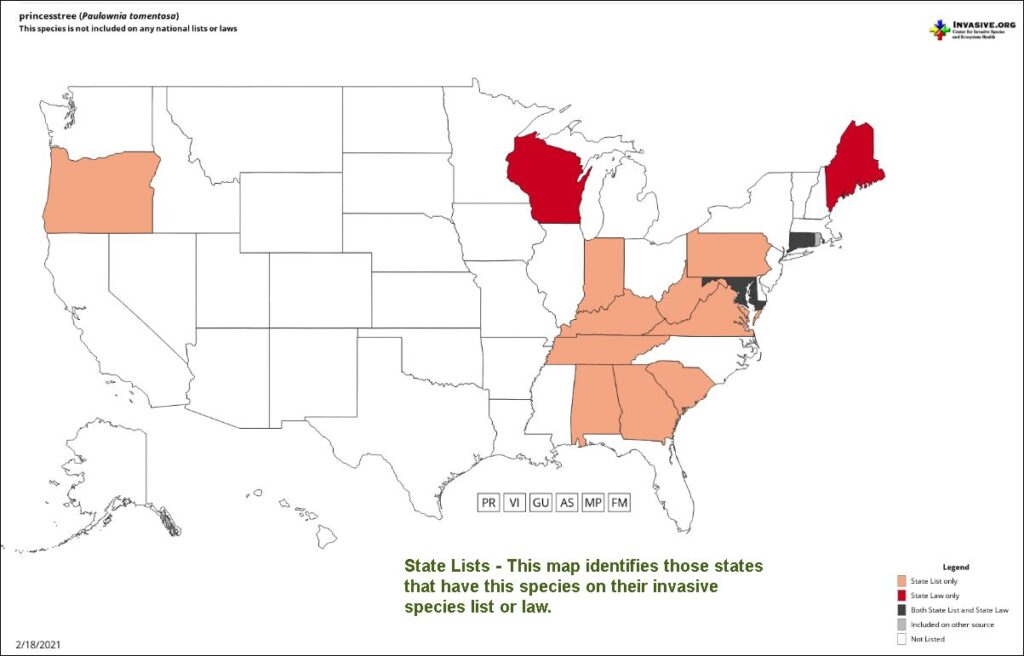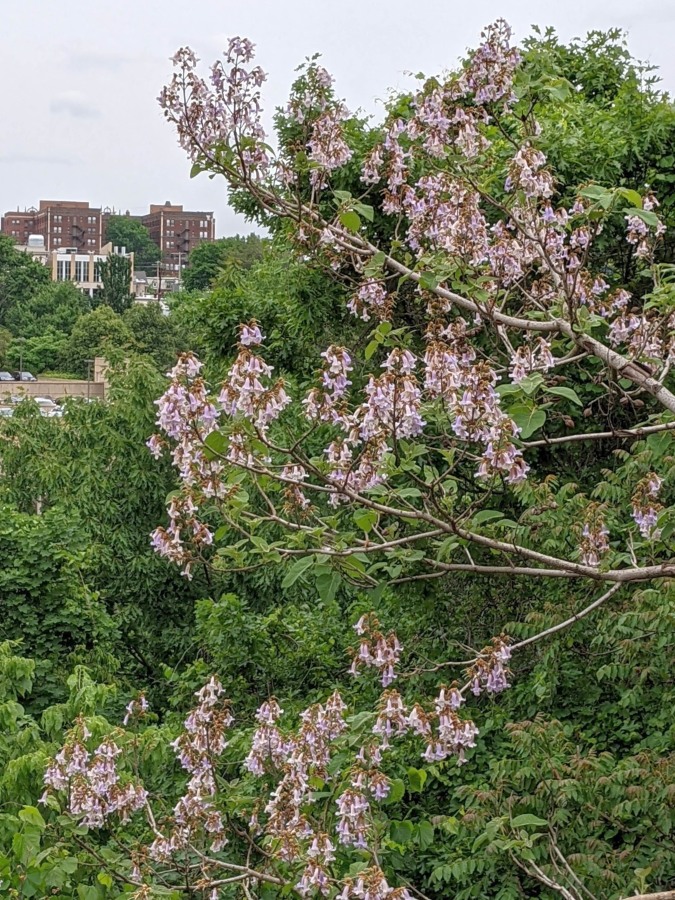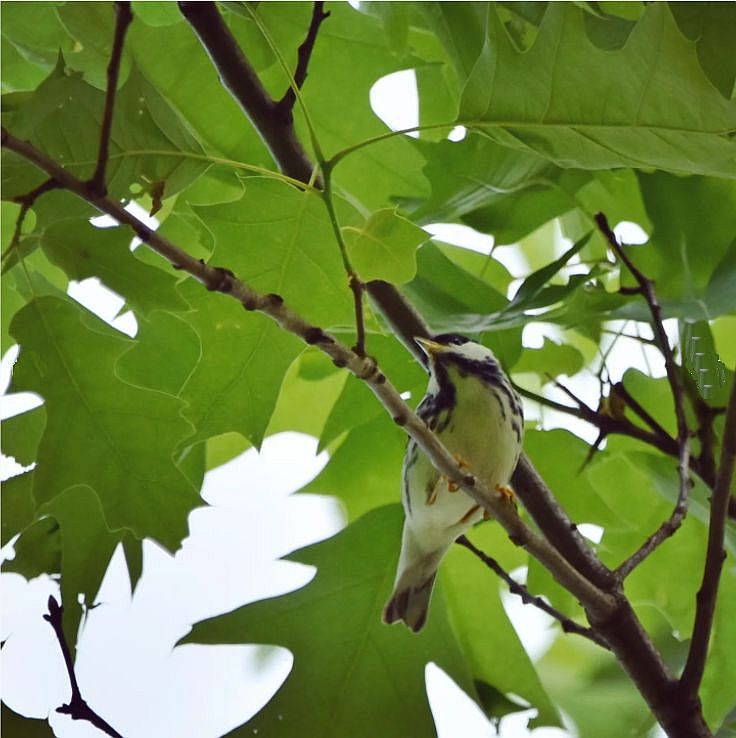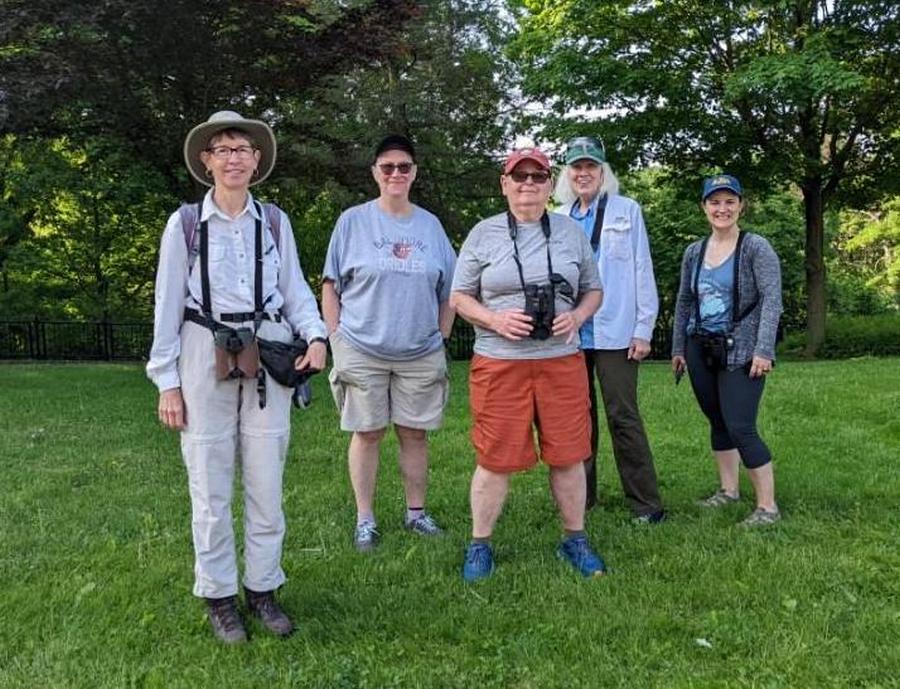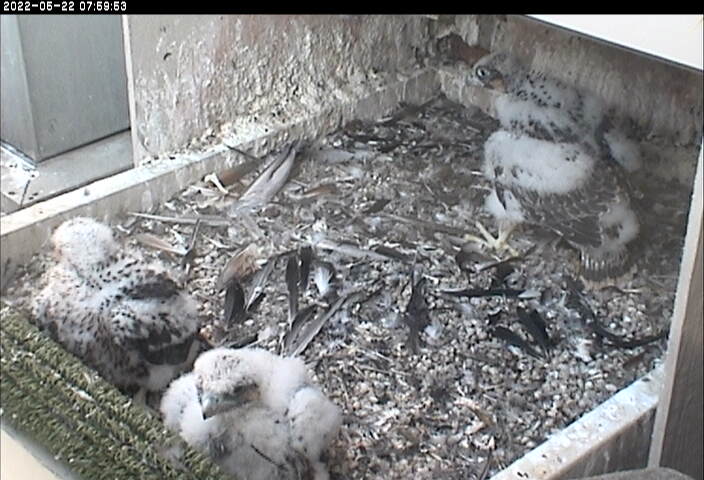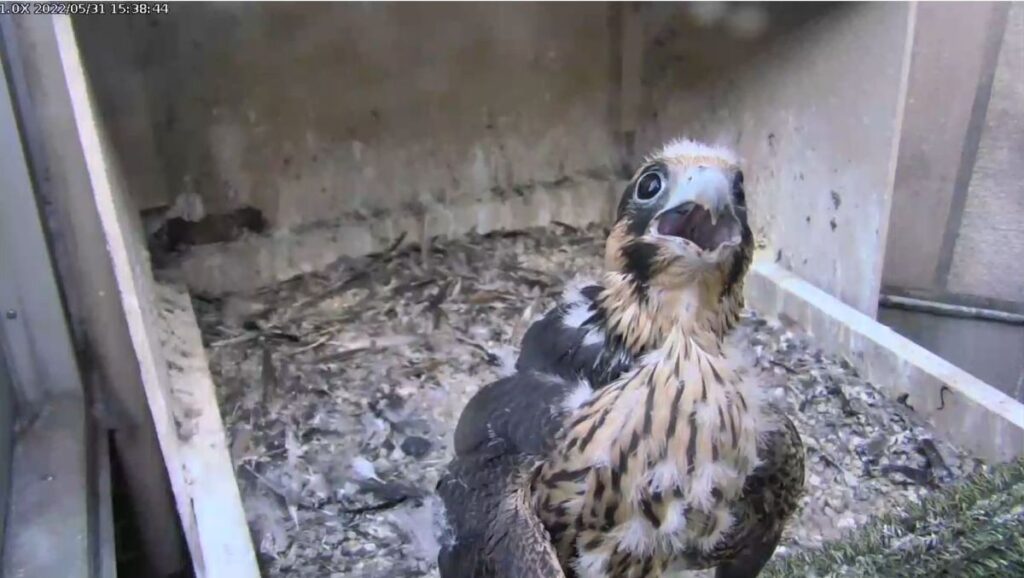
1 June 2022
Yesterday was an eventful day at the Cathedral of Learning peregrine nest where, like a couple of yo-yos, two of the three chicks hopped into and out of the gully. As usual, food was the great motivator that brought them back to the nest.
Yellow Girl fell into the gully last Saturday so by yesterday she’d been down there three days eating scraps that fell from the nest. How was she doing? Bob Mulvihill at the National Aviary panned the falconcam so we could see her. At 12:12pm she was in the keyhole with her tail showing.
At 12:26pm Red Boy decided to try the gully for himself and disappeared below where he hung out with Yellow Girl in the shade (see slideshow below).
The youngest, Silver Girl (whose blue tape came off of her silver band), stayed topside. She’s quite well fed so when Morela fussed with food at 3:39pm, Silver Girl didn’t go for it. Red Boy did! When he saw Morela toying with food he jumped back to the green perch and into the nest.
The enticement of food worked so well that Morela made sure to take her time at the 5:37pm feeding. She knew Yellow Girl was watching and it didn’t take long before the wanderer jumped to the green perch, flapped to the nest, snatched the food from Morela and Red Boy, and mantled while she ate. Yellow Girl was hungry!
That happened fast, didn’t it! Here it is in a stop-motion slideshow. (If the slideshow doesn’t advance swipe it right to left.)
This morning all three chicks are in the nest but two have already ledge walked and now have the confidence to explore.
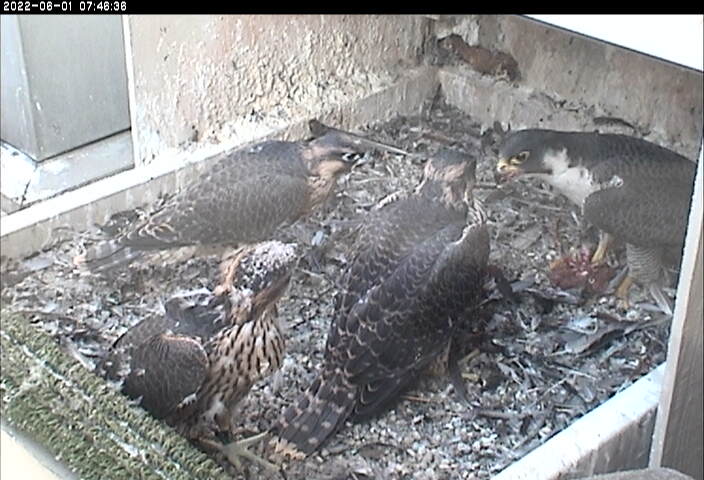
Don’t be surprised when they go off camera.
We’ll see them at Pitt Peregrine Fledge Watch at Schenley Plaza June 4, 5 and 7. Meanwhile you can watch them on the National Aviary falconcam.
(photos and video from the National Aviary falconcam)
